Traditional Christmas Series
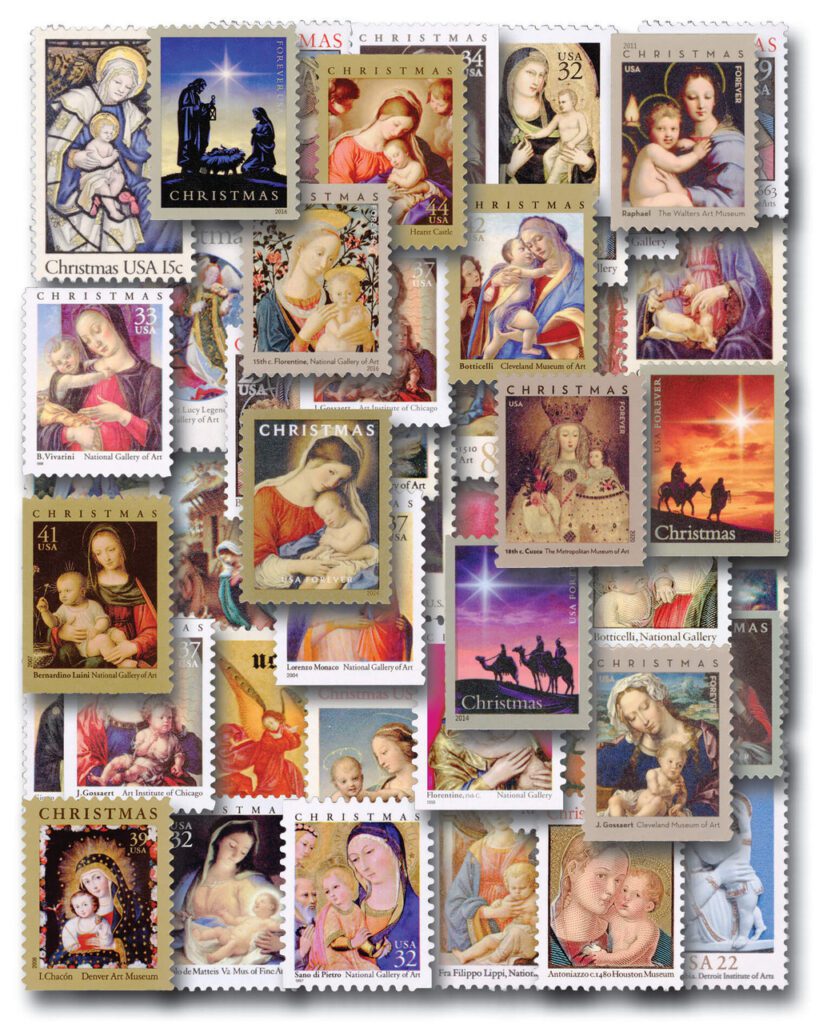
The Traditional Christmas Series celebrates the sacred themes of the holiday with artwork rooted in Christian iconography. Since its introduction, the series has featured classic depictions of the Nativity, Madonna and Child, angels, and other scenes that reflect the religious origins of Christmas. Many designs draw from historic masterpieces—paintings, sculptures, and stained-glass windows found in churches and museums across the world—bringing centuries of devotional art to modern mail.
Over the decades, Traditional Christmas stamps have become a favorite for those who prefer a classic, faith-centered look on their holiday mail. Each new issue blends artistic beauty with cultural heritage, preserving important works of sacred art while marking the season with reverence and tradition.
The fifth US Christmas stamp (and first traditional design) illustrates the Madonna and Child With Angels by painter Hans Memling, which hangs in the National Gallery of Art, Washington, DC.
This US Christmas issue utilizes the same design as the previous year, the Madonna and Child With Angels by Hans Memling. However, because the stamp is nearly twice the size of the original issue, greater detail can be enjoyed.
The 1968 Christmas issue pictures the angel Gabriel and is titled The Annunciation. It was painted by the Flemish painter Jan van Eyck, who often signed his paintings, “Done as well as I can.”
Lorenzo Lotto painted the dramatic Nativity scene pictured on this issue. Overshadowed by more famous painters during his lifetime, Lotto tried to auction thirty of his paintings when he was 70 and impoverished, but he could sell only seven. The painting pictured on the 1970 Traditional Christmas stamp hangs in the National Gallery of Art, Washington, DC.
The design of this stamp is based on Giorgione’s Adoration of the Shepherds, which was painted on wood about 1510 and hangs in the National Gallery of Art.
This religious-themed Christmas stamp comes from a panel painted by an unknown Flemish artist. The entire painting is titled Mary, Queen of Heaven, and it currently hangs in the National Gallery of Art, Washington, DC.
In recognition of the Christmas season, this stamp features the masterpiece Small Cowper Madonna by Raphael. Today, the painting hangs in the National Gallery of Art, Washington, DC.
A “mystery angel,” this Christmas stamp design was taken from one of the panels of a large altarpiece painting created in 1480. The subject of the altarpiece is considered unusual, showing the adoration of the empty cross on Golgotha, but with a view of Avignon in the background.
The Dove of Peace weathervane from George Washington’s Mount Vernon home provided the symbol for this Traditional Christmas stamp. The issue was also special in that it was the first self-adhesive stamp produced by the United States. Unfortunately, the adhesive didn’t age well, causing many examples of this stamp to yellow to an almost parchment-like color.
This Christmas issue shows a detail of the Madonna and Child painted by Italian artist Domenico di Tommaso Ghirlandaio. Because postage rates for late 1975 were uncertain, both Christmas stamps were issued with no denomination; they were the first non-denominated US stamps.
The design of the 1976 Traditional Christmas stamp is adapted from the 1776 Nativity painting by John Singleton Copley, which hangs in Boston’s Museum of Fine Art.
The USPS’s 1976 Bicentennial theme was repeated on the Traditional Christmas stamp, which pictures General George Washington at prayer in Valley Forge.
This Christmas issue features a terra cotta sculpture of the Madonna and Child with Cherubim by Andrea della Robbia. The sculpture is located in the National Gallery of Art in Washington, DC.
Gerard David’s painting The Rest on the Flight into Egypt is the subject of this Christmas issue. The scene comes from an apocryphal story of Mary, Joseph, and the baby Jesus fleeing Bethlehem. After three days of travel, the family paused for a rest. Mary was hungry, but the date-palm branches were too high for Joseph to reach. Hence, Jesus commanded the tree to lower its branches so that they could access the fruit.
This religious Christmas stamp illustrates the Madonna and Child, taken from a stained glass window in the Bethlehem Chapel in Washington’s National Cathedral. The stamp was issued at the cathedral. versions of this scene. The one pictured on this stamp hangs in the National Gallery of Art, Washington, DC.
This religious Christmas issue depicts the Madonna and Child by the artist Botticelli. In the late 1490s, Botticelli became so moved by the preaching of the Italian friar, Savonarola, that he burned many of his non-religious works and painted only religious themes from then forward.
This issue features a painting of the Madonna and Child by artist Giovanni Battista Tiepolo called Madonna of the Goldfinch. This 18th-century masterpiece currently hangs in the National Gallery of Art in Washington, DC.
1983 marked the sixth year in a row that the Madonna and Child were used on a Christmas stamp. This stamp is the second Christmas stamp to use a painting by Raphael in its design.
This Christmas stamp features the painting of the Madonna and Child by Fra Filippo Lippi. It hangs in the National Gallery of Art, Washington, DC.
The religious Christmas issue for 1985 features the 15th-century Genoa Madonna by Luca della Robbia.
Issued in Washington, DC, the religious Christmas issue features the Perugino Madonna and Child, which hangs in the National Gallery. Pietro Perugino (1446-1524) was the leading artist of the Umbrian school, which developed qualities that found expression in the High Renaissance. Raphael, whose work has also graced Traditional Christmas stamp designs, was Perugino’s most famous pupil.
The 1987 Traditional Christmas issue features the Madonna and Child from a larger painting by the Italian Renaissance artist, Giovanni Battista Moroni. Named A Gentleman in Adoration Before the Madonna, the 1560 painting is part of the collection at the National Gallery of Art in Washington, DC.
Responding to complaints over the definitive-sized Christmas stamps issued in 1986 and 1987, the USPS issued the 1988 Christmas stamps in a new size, approximately 50% larger than the previous issues. This Madonna and Child painting by Botticelli is part of the National Gallery of Art Collection.
The Traditional Christmas stamp pictures the Madonna and Child detail of Ludovico Caracci’s painting The Dream of Saint Catherine of Alexandria. A new feature for 1989 was a booklet of 20 Christmas traditional stamps, in addition to the sheet stamps, which could be conveniently dispensed in vending machines.
A detail from the 15th century tempera (pigments mixed with egg yolk traditionally) and oil painting Madonna and Child by Antonello da Messina is on the 1990 Traditional Christmas issue. The painting is part of the national Gallery’s Andrew W. Mellon Collection.
The image on the 1991 stamp is taken from a tempera and gold leaf painting by 15th-century Italian artist Antoniazzo Romano – Madonna and Child with Donor. Romano painted in a realistic style, using light and shadow to add to the depth of his subjects.
This year’s Traditional Christmas stamp was based on the painting Madonna and Child With Saints by Giovanni Bellini. A member of the Bellini family of painters during the Italian Renaissance, he helped develop a type of painting known as sacra conversazione (holy conversation), featuring the Madonna and Child in an interior setting with two or more saints.
Madonna and Child in a Landscape by Italian Renaissance artist Giovanni Battista Cima da Conegliano, is one of the jewels in the collection of the North Carolina Museum of Art. Created about 1497, the painting depicts Mary and baby Jesus with a monastery and a hill town in the landscape behind them. Although Cima spent his entire career in Venice, the picturesque landscape surrounding his hometown of Conegliano was important inspiration for the artist, and he frequently used it as the background for his paintings.
Even in 17th-century Bologna, Italy, which was known for its intellectual and artistic women, the talent of Elisabetta Sirani was considered unusual. Remarkably gifted, young Sirani learned to paint in her father’s studio, where she studied under Guido Reni, one of the most influential painters of her day. This was the first year the Traditional Christmas stamp featured work by a woman artist.
1995’s Traditional Christmas stamp was issued in both sheet and booklet formats and is based upon the work of one of the most influential painters in history, the Florentine artist Giotto di Bondone. Created during the 14th century, in the latter part of his career, the painting, entitled Enthroned Madonna and Child, was executed on the central portion of a five-section polyptych, or altarpiece. In the painting the Madonna offers a white rose to the Christ Child. This exquisite masterpiece is now a part of the National Gallery of Art in Washington, DC.
In 1712, Paolo de Matteis completed this oil painting for the Duchess of Laurenzano, a leading patron of the arts in Naples. Noted for the vibrant formal style typical of the late Baroque period of Naples, it is considered a masterpiece by historians of Neapolitan art.
The 1997 Traditional Christmas stamp was issued October 27. It shows a detail from Sano di Pietro’s 15th-century painting Madonna and Child with Saints and Angels, which hangs in the National Gallery of Art in Washington, DC. The stamp was printed using only offset lithography, so to prevent counterfeiting, a piece of microprinting was added to the design. If you look at the pale yellow line on the back of Mary’s hood near the location where her halo goes behind her head, you will find the inscription “CHRISTMAS 1997.”
The image on the stamp is a 15th-century sculpture created by an unknown artist in Florence, Italy. The painted and gilded terra cotta statue portrays the baby Jesus being held by his mother. It is in the Italian Renaissance Gallery at the National Gallery of Art, Washington, DC.
Bartolomeo Vivarini’s painting Madonna and Child is featured in the 1999 Traditional Christmas postage stamp issued by the United States. The Vivarini family, whose original surname was da Murano, included several artists who operated an important workshop in Venice during the 15th century.
This Holiday Traditional stamp features a detail from a painting by Italian Renaissance artist Lorenzo Costa. Painted in oil on a panel, Virgin and Child is in the John G. Johnson Collection at the Philadelphia Museum of Art.
Featuring artwork by Jan Gossaert, a Renaissance artist from the Netherlands, the design was originally supposed to be used in 2000. However, the Postal Service chose to hold it until after the rate increase of 2002. The design was then reprinted in 2003. Gossaert brought the influence of ancient Roman architecture to Northern Flemish painting. The painting is currently held at the Art Institute of Chicago.
The 2004 Traditional Christmas stamp displays Lorenzo Monaco’s lovely Madonna and Child (1413), painted in tempera on panel, from a collection in the National Gallery of Art in Washington, DC.
In 2006, the traditional holiday stamp features Madonna and Child with Bird, attributed to Peruvian artist Ignacio Chacón and painted around 1765. The oil-on-canvas work is part of the Engracia and Frank Barrows Freyer Collection of Peruvian colonial art at the Denver Museum.
The 2007 Traditional Christmas stamp was reproduced from The Madonna of the Carnation, a painting by Bernardino Luini (circa 1480-1532). Luini was a student of Leonardo da Vinci in Milan, and his work is so similar to his teacher’s that some of his art was originally credited to da Vinci. He is well known for his frescoes (paintings on plaster), which decorate many churches in and around Milan. The Madonna wears the “Luinesque” half-smile with downcast eyes, made famous by Luini.
The detail shown on this stamp comes from Virgin and Child with the Young John the Baptist and was painted by Botticelli circa 1490. The tempera and oil on wood piece shows Jesus held in Mary’s arms while the young John the Baptist—patron saint of Florence—appears in adoration, a common subject in Florentine devotional art of the late 15th century.
Giovanni Battista Salvi, more commonly known as Sassoferrato, is renowned for his paintings of the Madonna, with the majority of his works depicting her in prayer or with the baby Jesus. Of the artist’s representations of the Madonna, one critic said, “Men grew… fond of Sassoferrato whose Madonnas, tender, lovely, carefully painted, all reveal the mother’s heart.”
The figure on the 2010 Traditional Christmas stamp was originally painted around 1480 by Melozzo da Forli in the Church of the Twelve Holy Apostles. The fresco showed Jesus as he ascended into heaven, surrounded by his apostles and angels playing instruments. It was destroyed during the church’s restoration in 1711, leaving 14 fragments, which are now held in the Vatican’s Pinacoteca art museum.
The graceful style and mastery of subtle lighting seen in Madonna of the Candelabra are hallmarks of Raffaello Sanzio da Urbino (1483-1520). Along with Michelangelo and Leonardo da Vinci, Raphael is considered one of the three great masters of the High Renaissance period.
According to the Bible, upon hearing a new Jewish king had been born, King Herod of Judea sent the men to find the baby and bring it to him. But each of the wise men had a dream, one that warned them to avoid Herod and take a different route home. Incensed, the king ordered the “slaughter of the innocents,” in which every male child under the age of two was to be killed to eliminate the threat posed by his supposed rival for the crown, Jesus. An angel also appeared to Joseph that night, warning him to flee to safety in Egypt with his wife and infant son, Jesus. Mary made the trip on a donkey with her baby in her arms and Joseph by her side, guided through the arid desert by a single star.
The 2013 Traditional Christmas issue pictures the Virgin and Child as depicted by Jan Gossaert. Gossaert was among the first northern European artists to study in Rome.
The Gospel of Matthew describes visitors “from the east” following a rising star in search of a child prophesied to be the son of God. They find the child in Bethlehem and offer him the three famous gifts of gold, frankincense, and myrrh.
Florence, Italy, was the center of the Italian Renaissance in the 15th century, and home to many artists. It was a large, prosperous city heavily influenced by the Roman Catholic Church. Famous religious figures, such as the Madonna and Child, were featured in many artist’s works, which can still be found in the city’s churches and museums.
The Star of Bethlehem, or Christmas star, is an important part of the story of Jesus’s birth. In fact, it is often featured in planetariums during the holiday season. While some believe the star is fictional, Christianity refers to it as a miracle and a sign of Jesus’s birth. Astronomers and historians have several theories about the star’s existence.
Bachiacca is largely credited with helping to evolve Mannerism, a late Renaissance style recognized by its exaggerated proportions and surreal elegance. Bachiacca was renowned for his detailed paintings of plants and animals. In paintings such as Madonna and Child, he included flowers with specific meanings. The baby Jesus is shown grasping a sprig of jasmine. Jasmine often represents Mary because the flower grows in May, which is known as the month of Mary. The other flowers in the painting – cornflower, rose, and sweetbriar – are all representative of Jesus and Mary as well.
In 2020, the United States Postal Service featured a painting of Our Lady of Guapulo on a Forever stamp. The painting was completed by an unknown artist in 18th-century Cuzco, Peru. The figures are painted in elaborate royal garments, showing just how important the Virgin Mary is to the people of Peru and Ecuador.
In painting his Virgin and Child, the Master of the Scandicci Lamentation followed a number of traditions popular with such works at the time. Like other artists who painted religious themes, he gave the young Mary a red dress and blue mantle. These colors represented her high status as the mother of Christ as well as her purity, virginity, and royalty. In the 16th century, blue paint was usually made from lapis lazuli, a stone imported from Afghanistan. The color was reserved for only the most important figures in paintings.
Sassoferrato was born Giovanni Battista Salvi (1609-85). As was tradition, he took his popular name from the town of his birth, Sassoferrato, Italy. For most of his career, Sassoferrato painted images of the Virgin Mary, Madonna and Child, and the Holy Family. Sassoferrato created original paintings, then he and the artists in his workshop painted hundreds of copies. While the overall compositions were the same, some details were changed, making each painting slightly different. Many of these paintings were made for private collectors. But Sassoferrato also kept a stack of completed paintings in the workshop ready to sell.

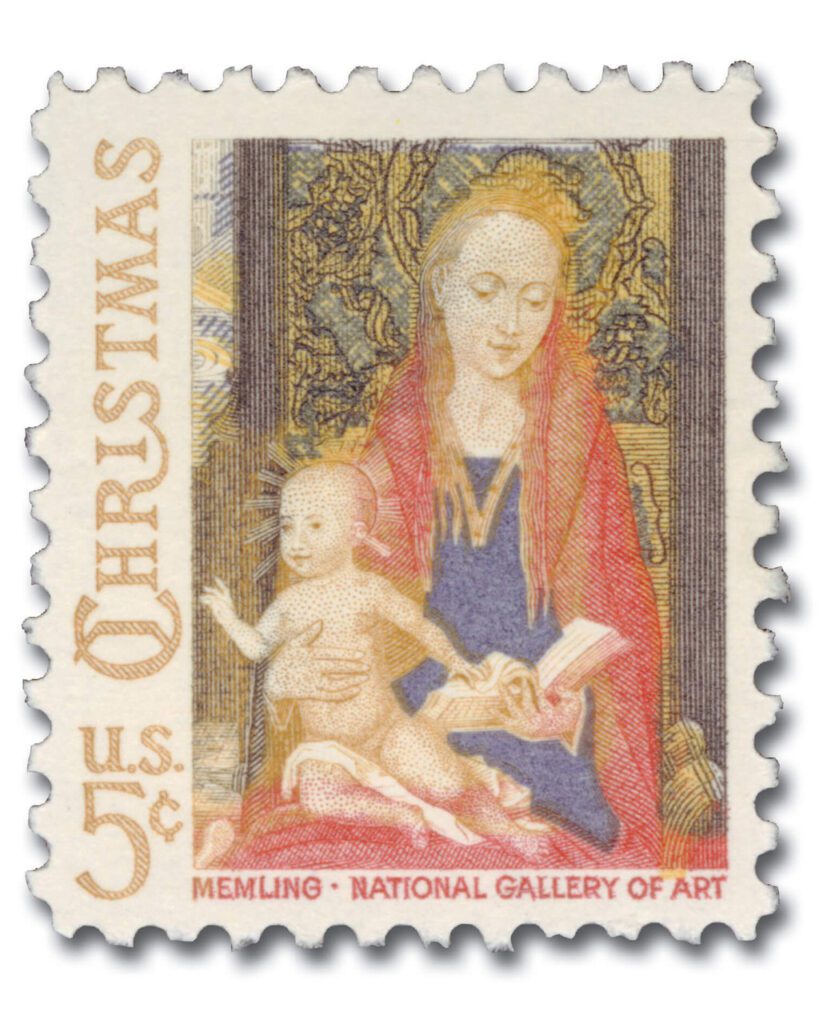
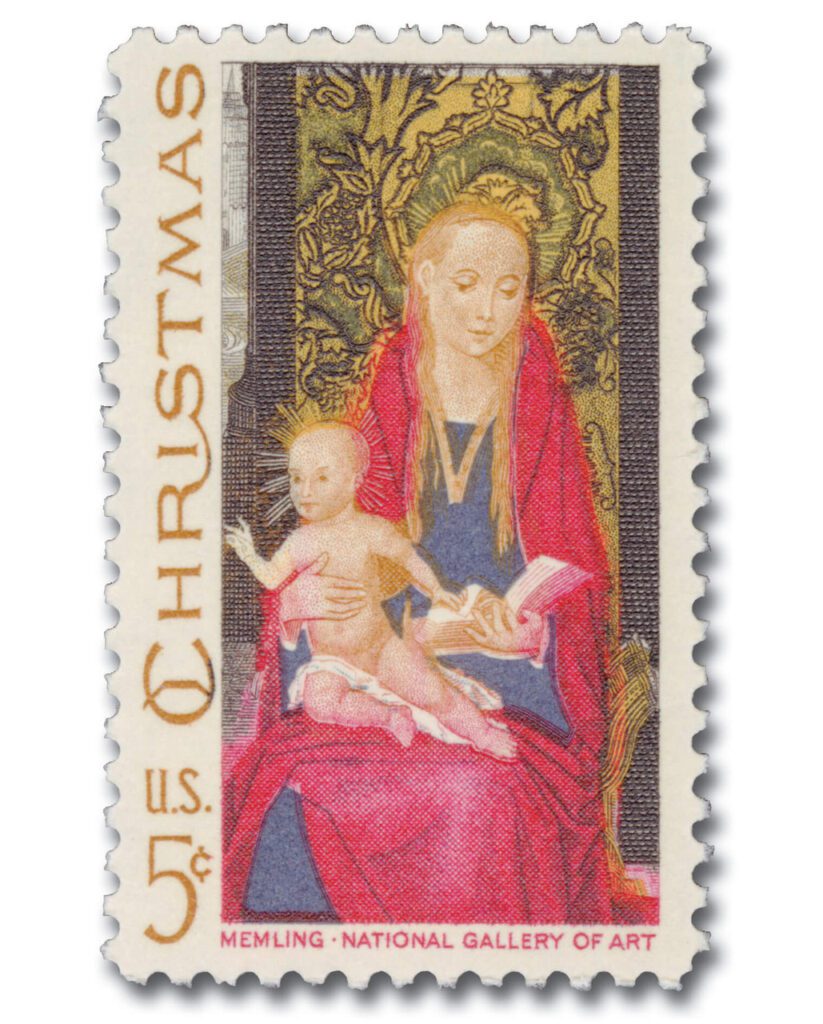
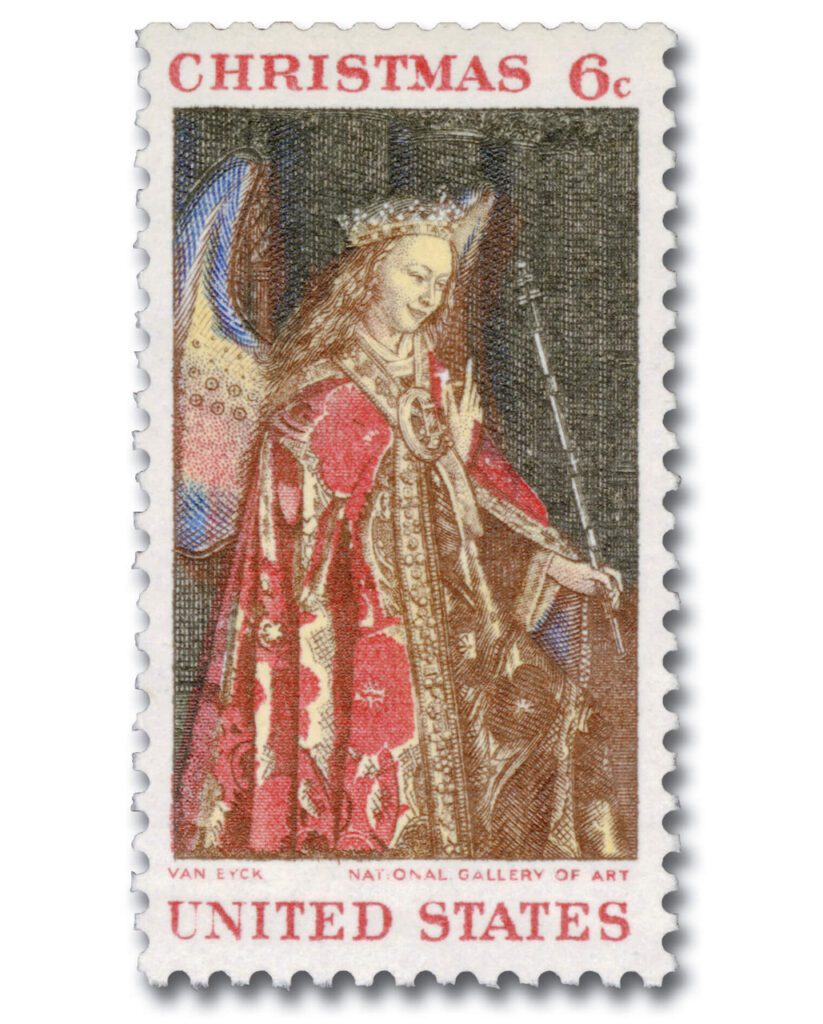
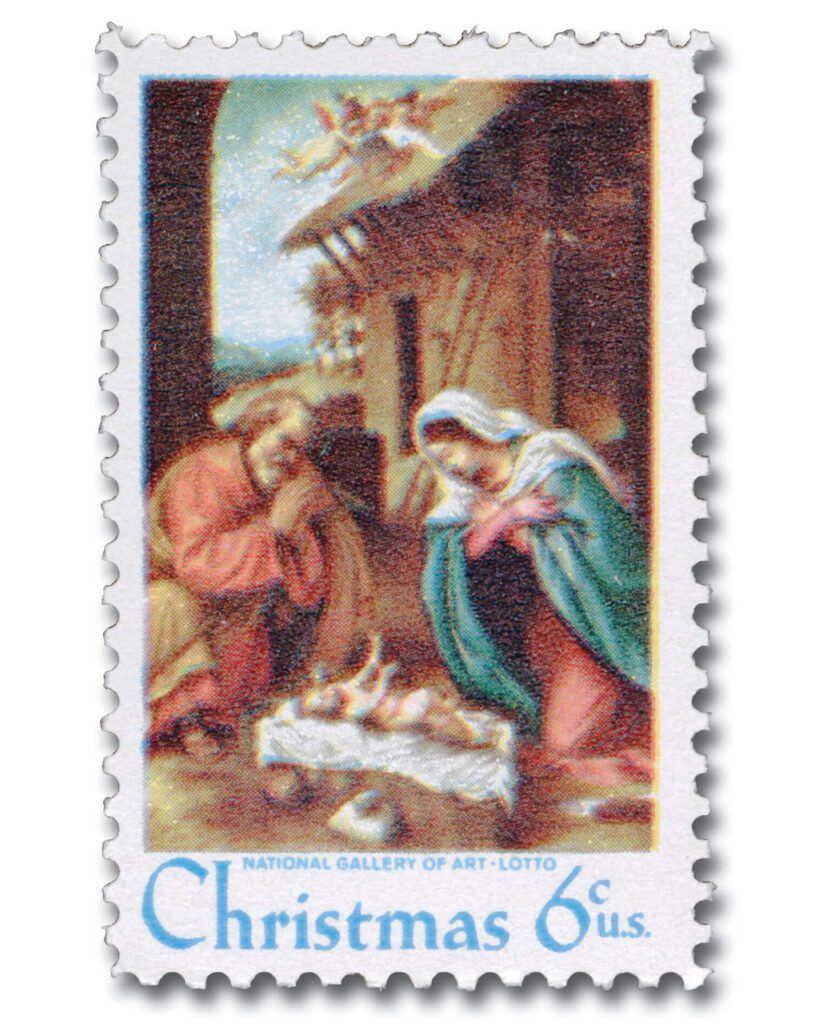
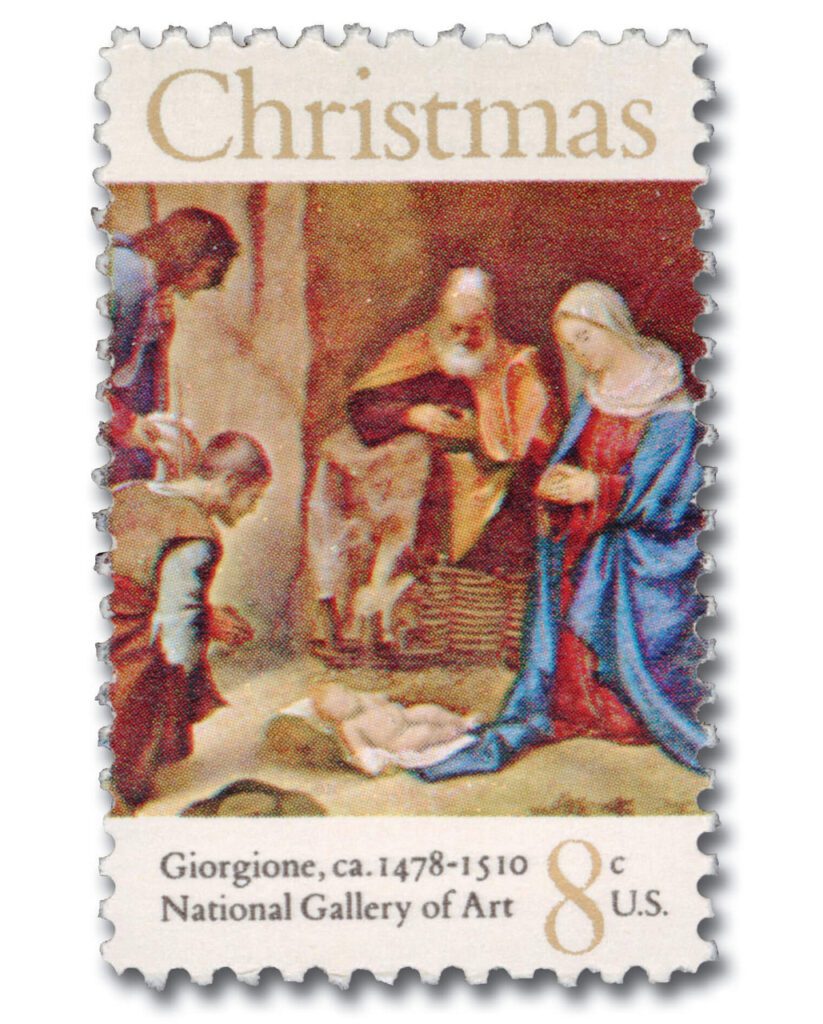
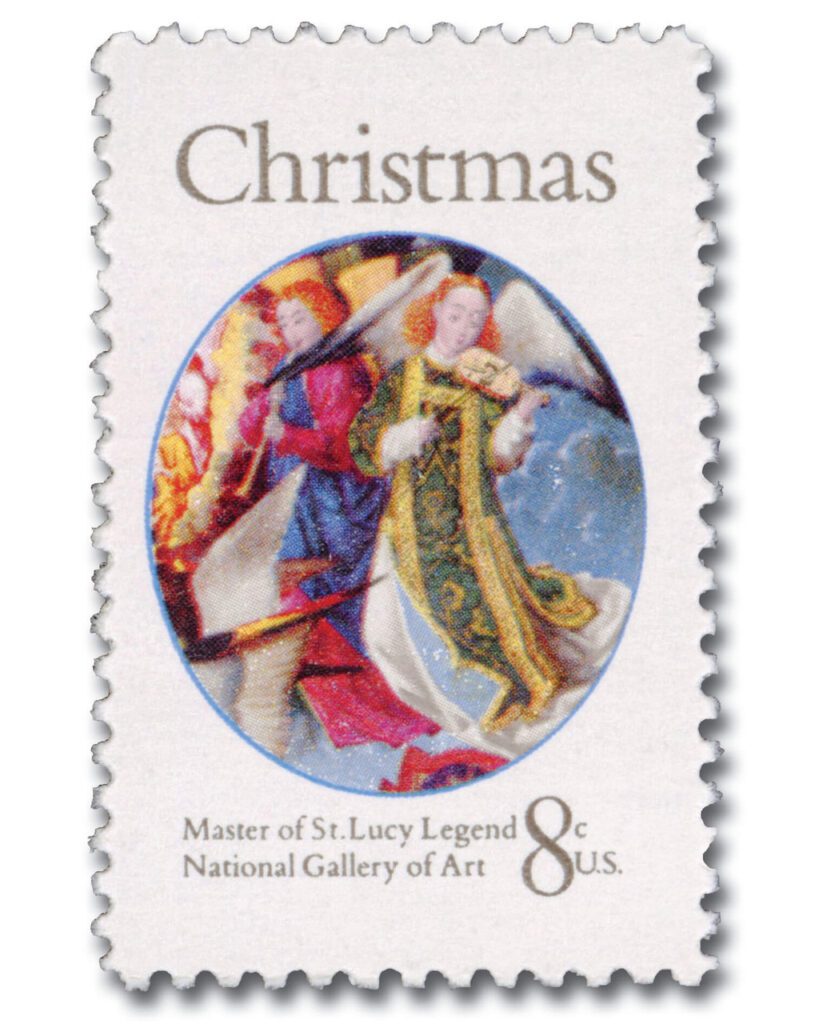
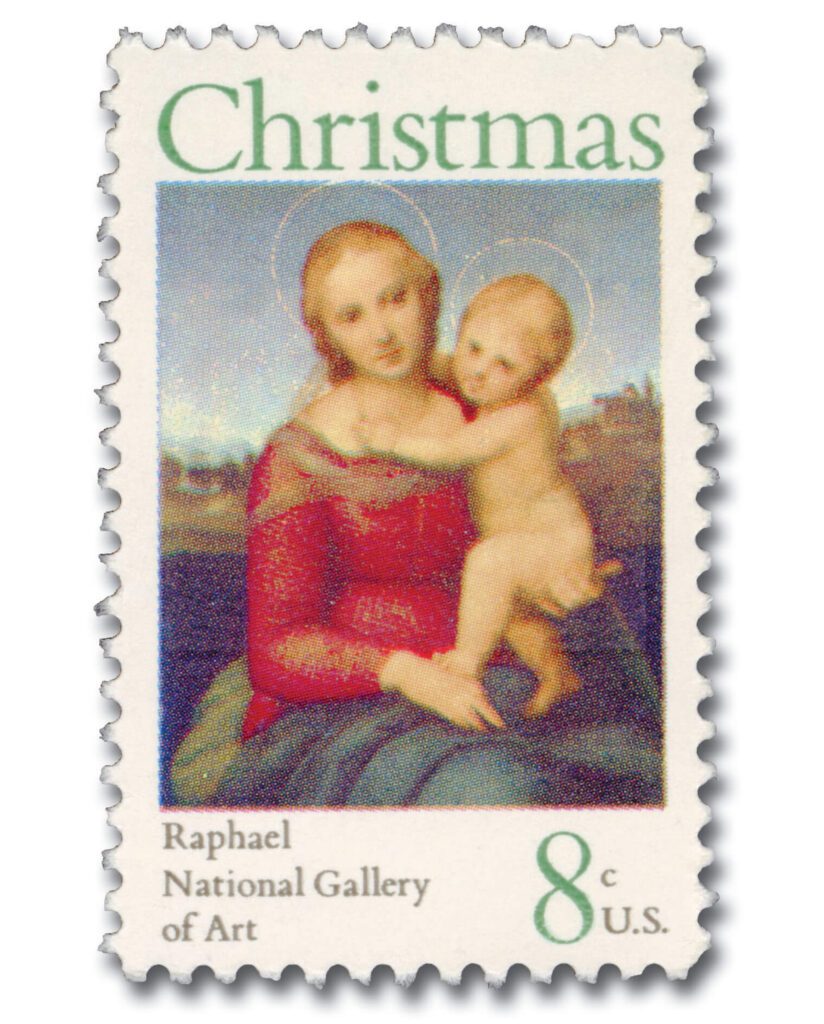
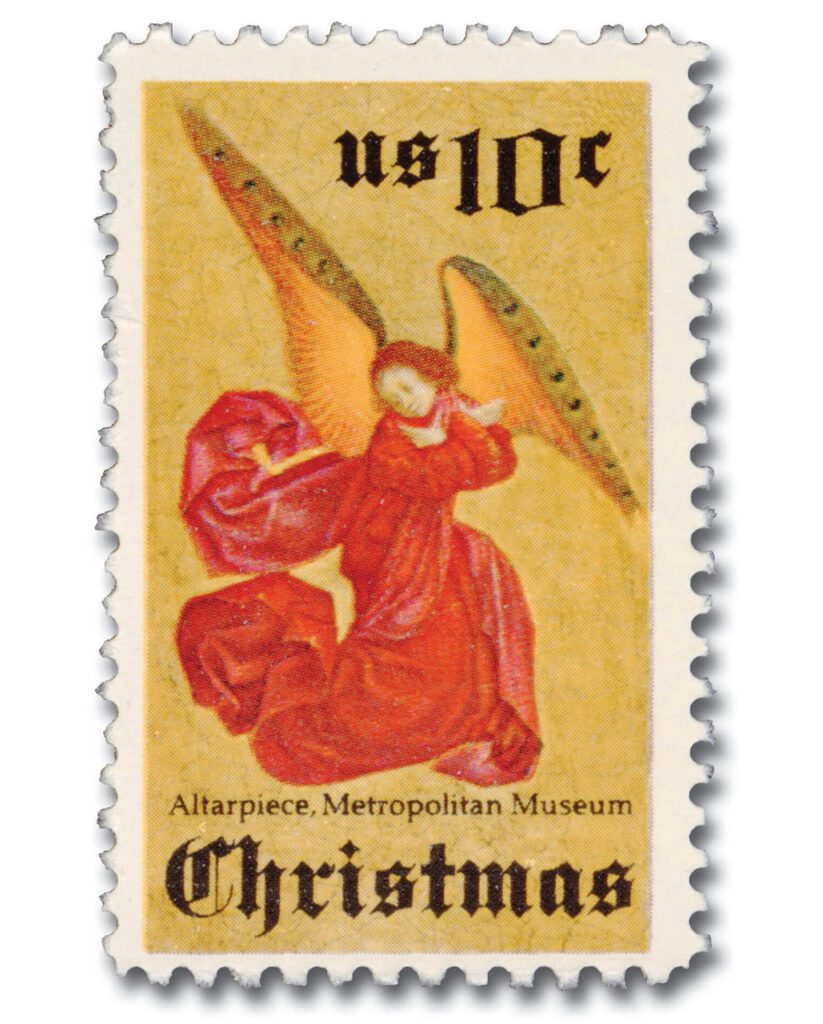
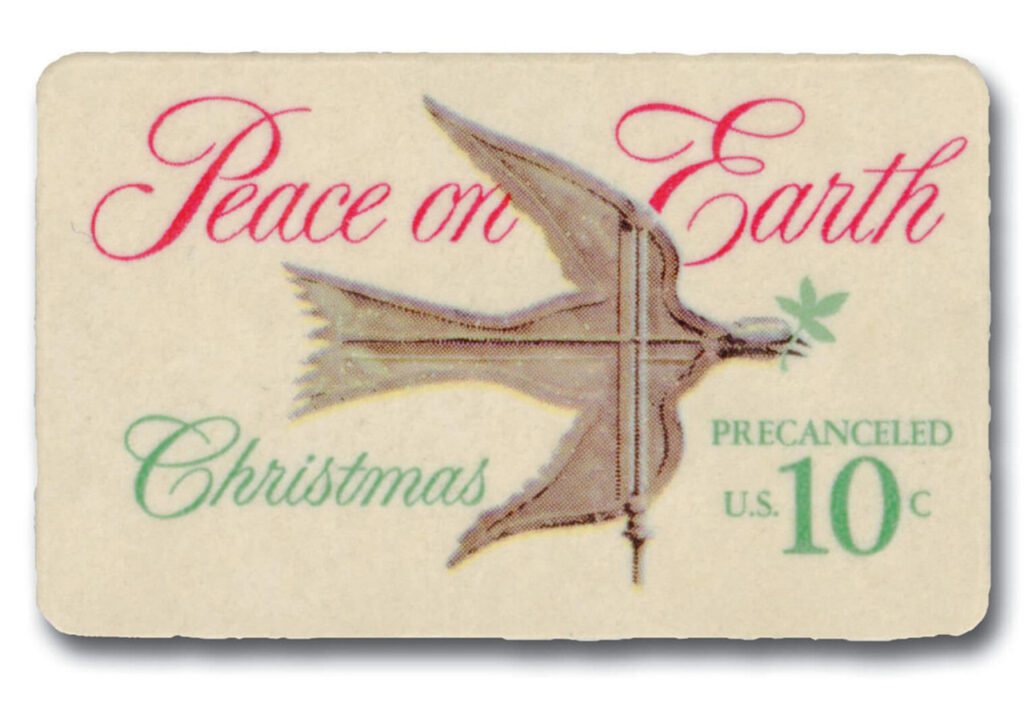
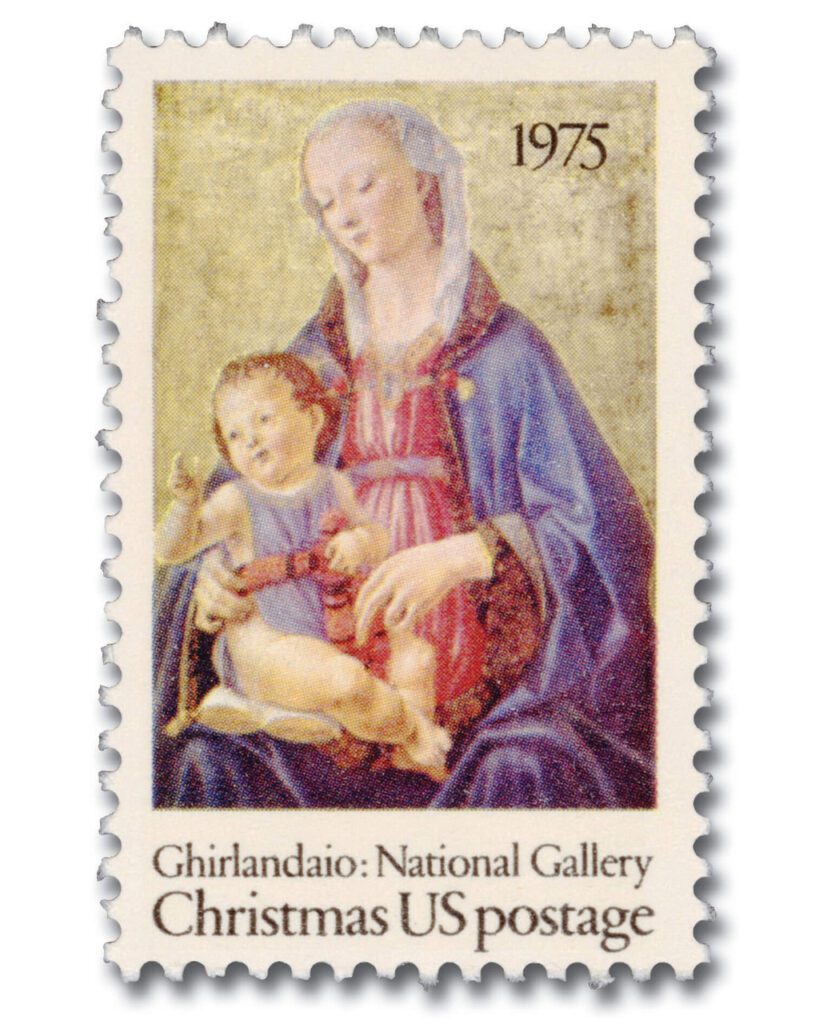
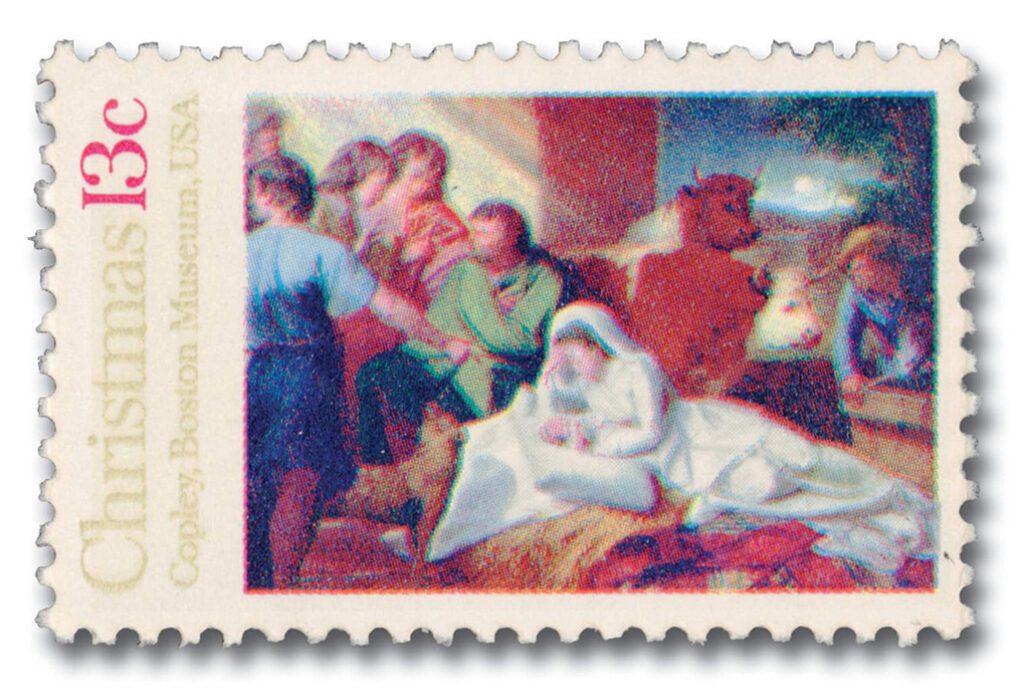
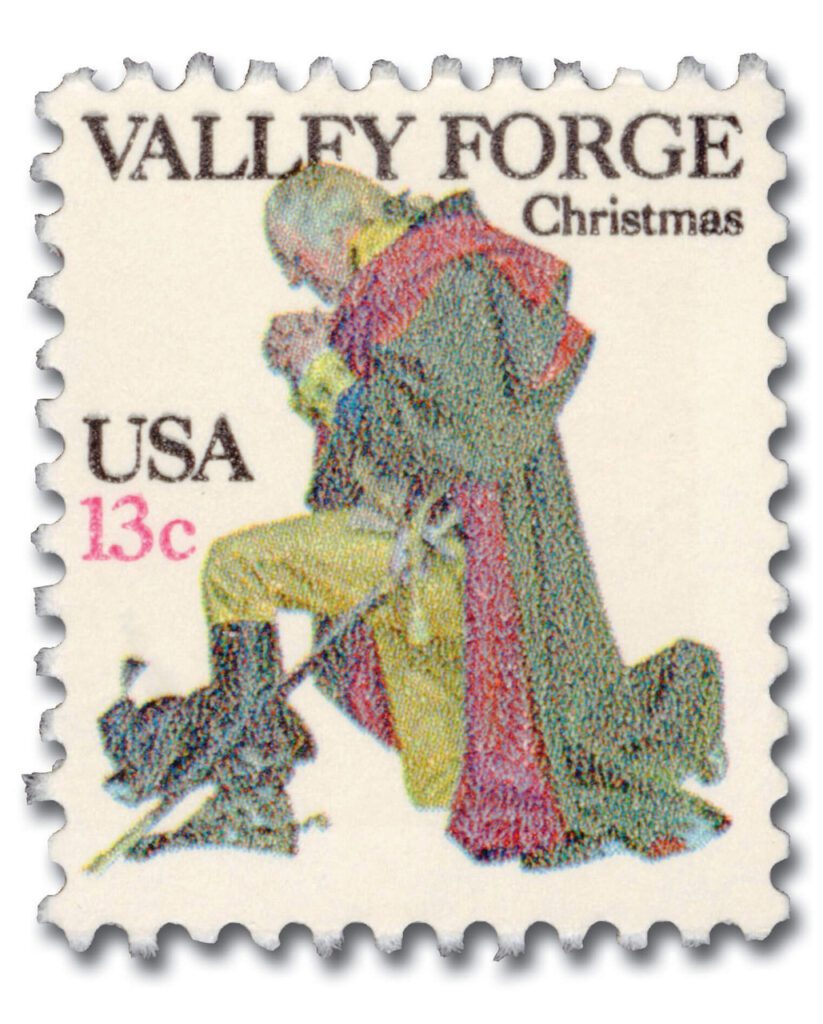
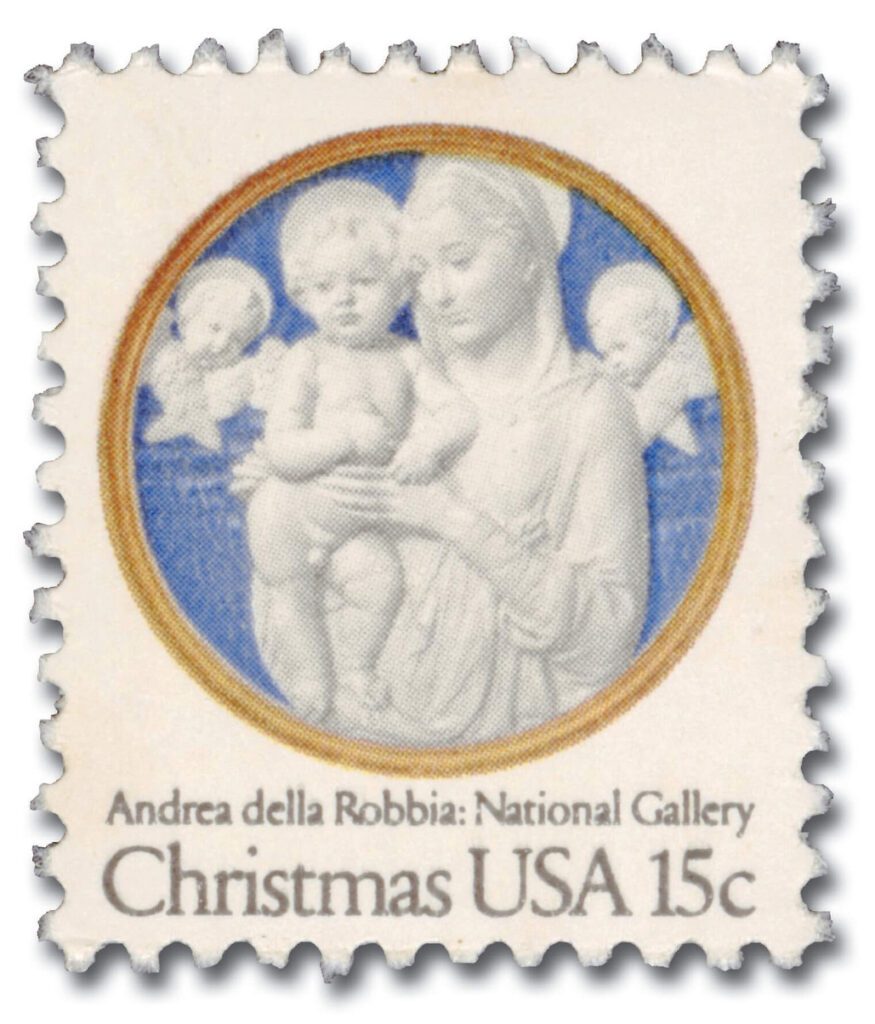
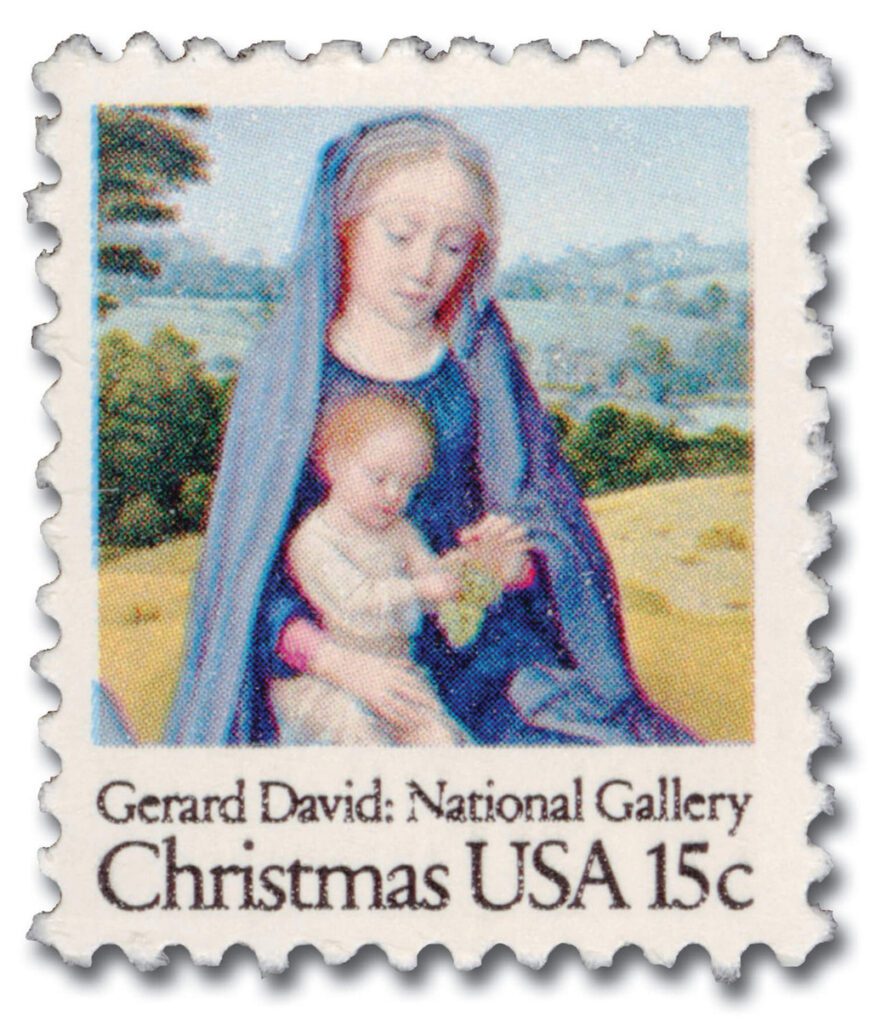

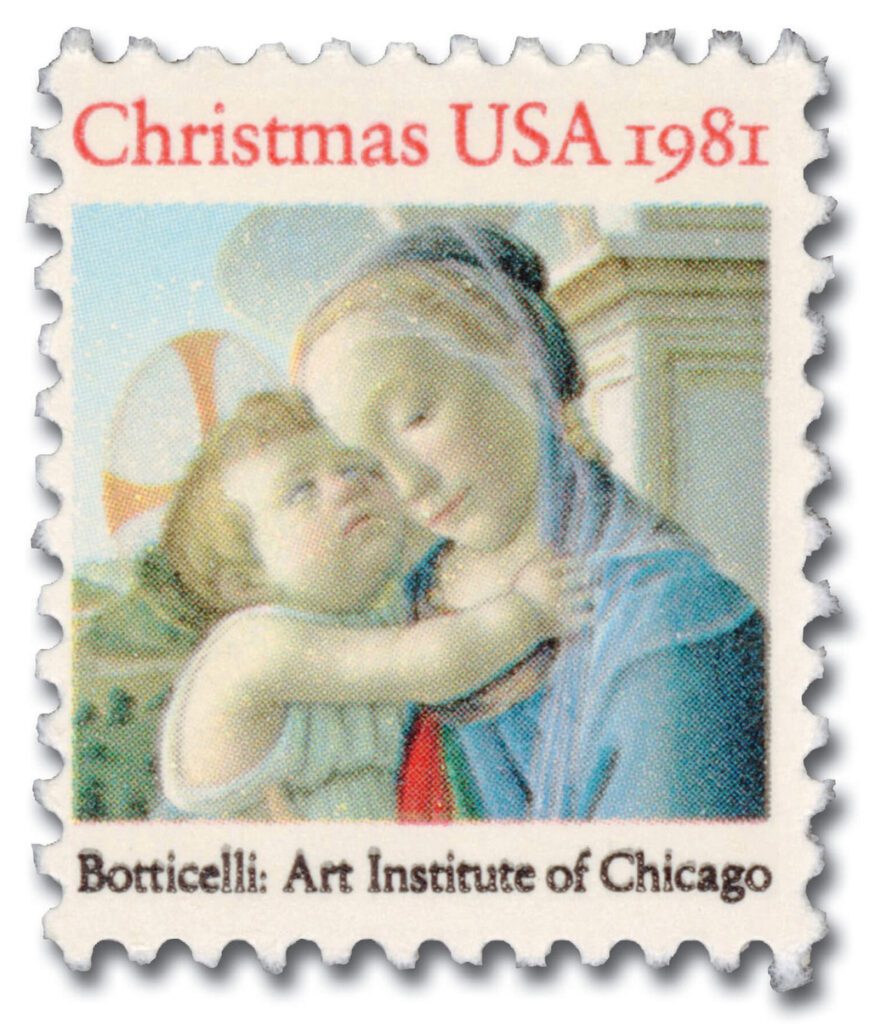
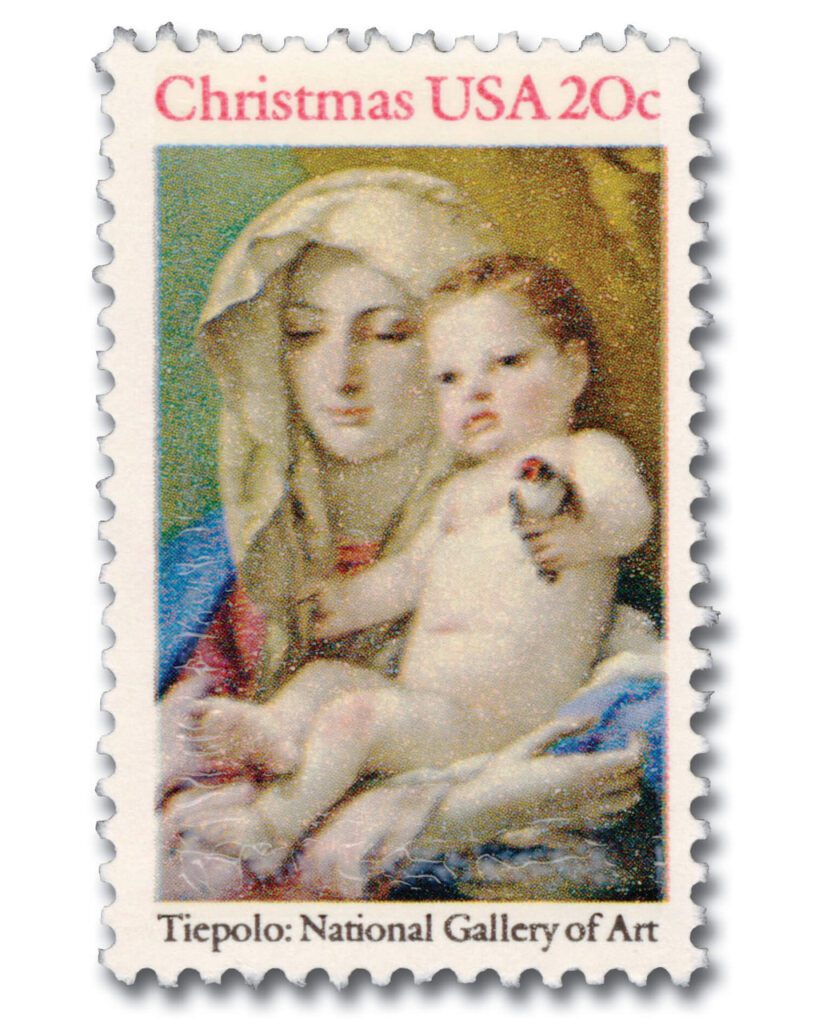
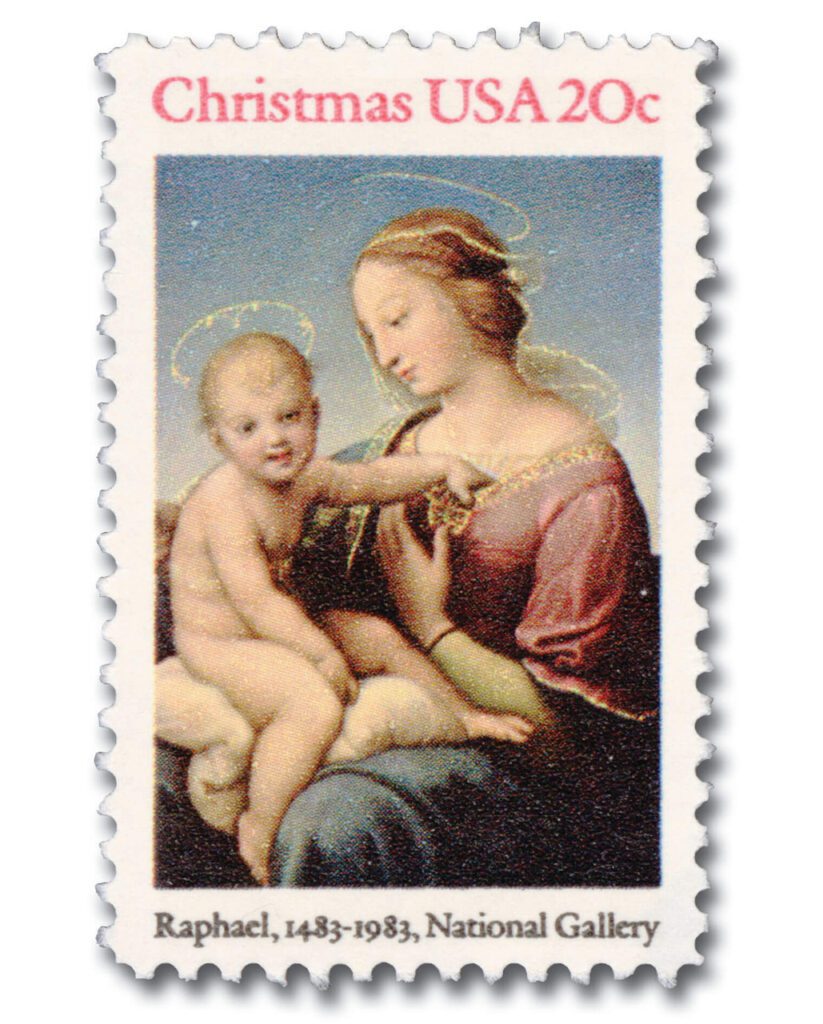
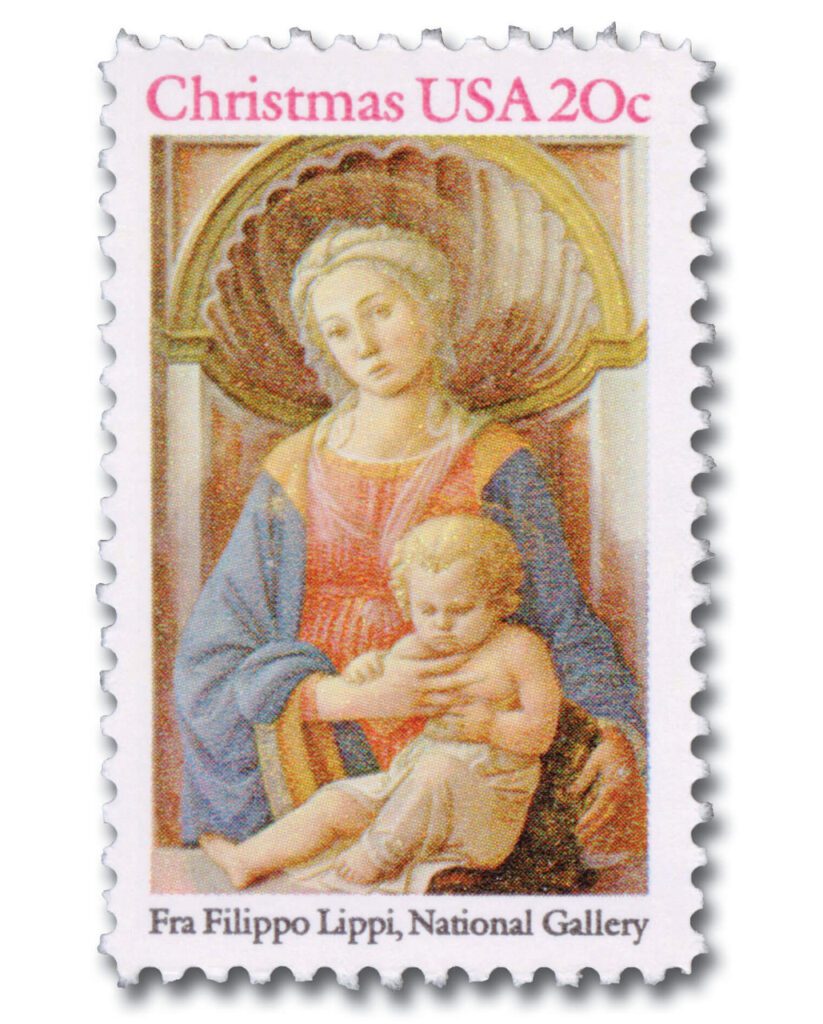
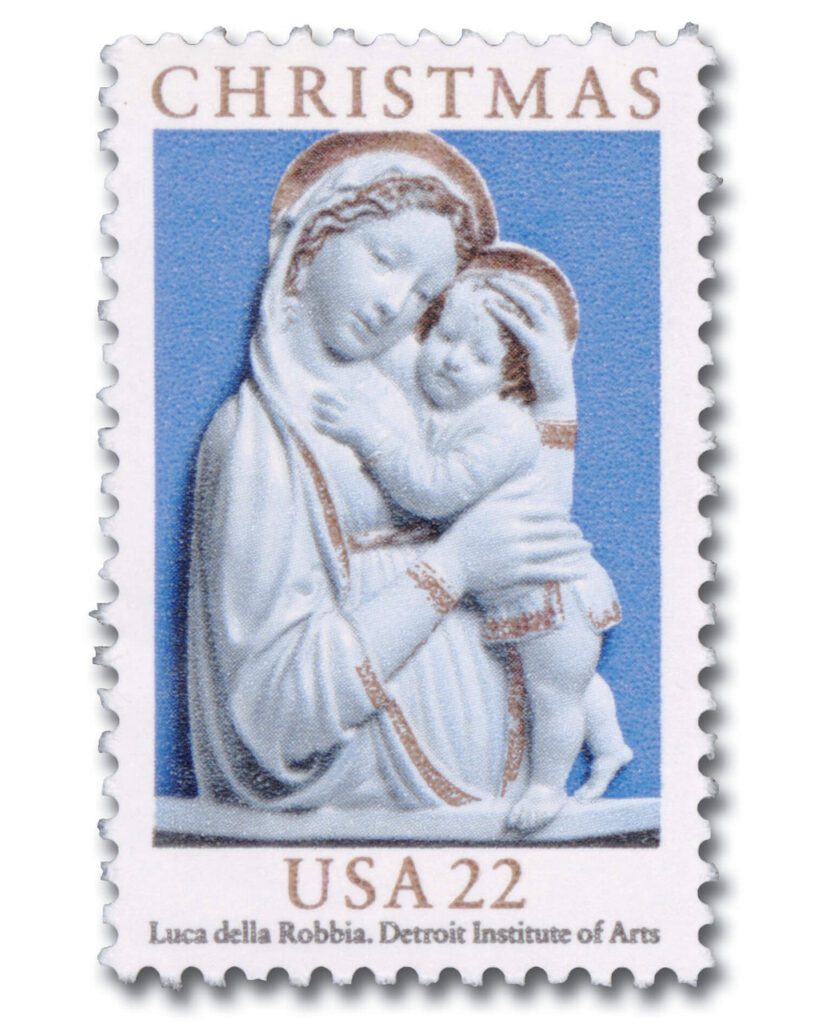
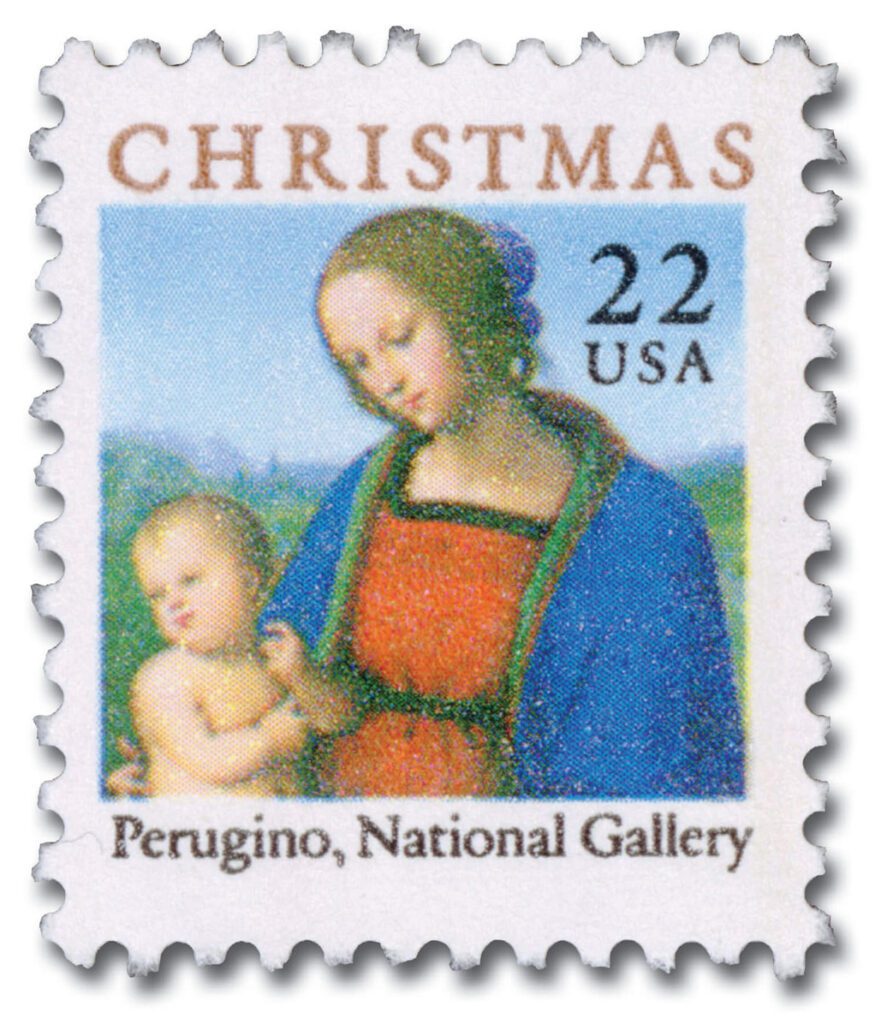
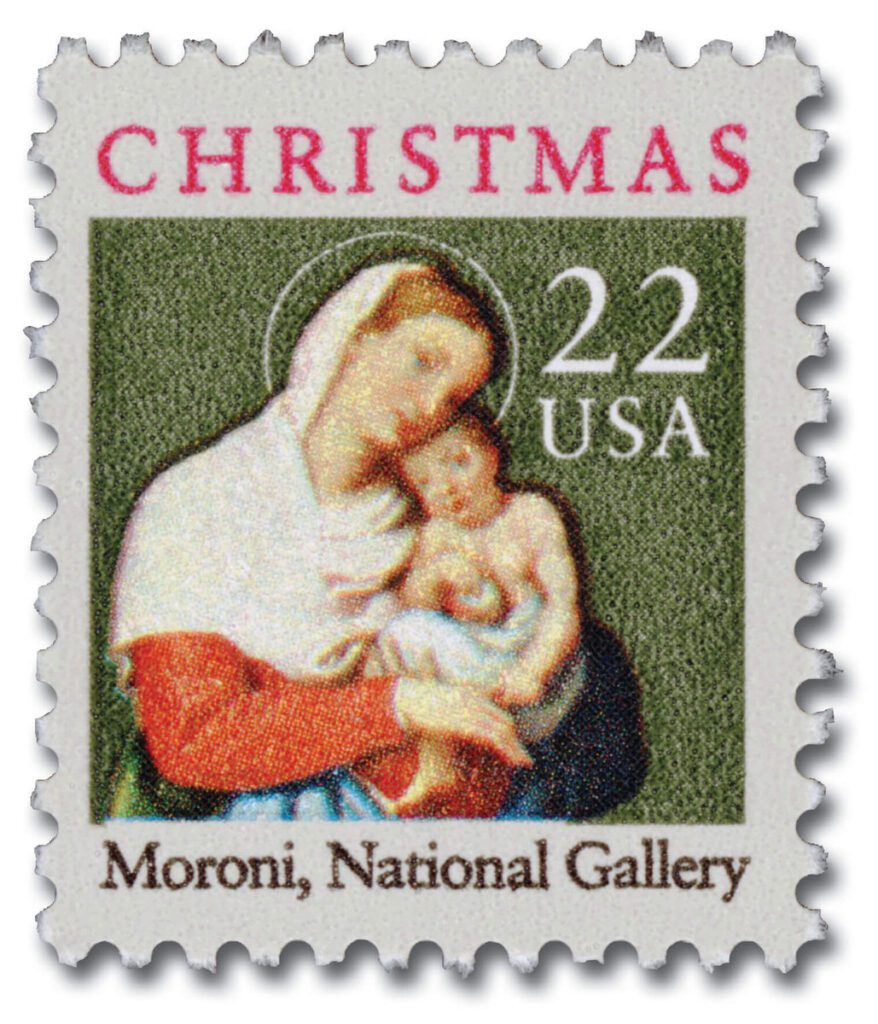
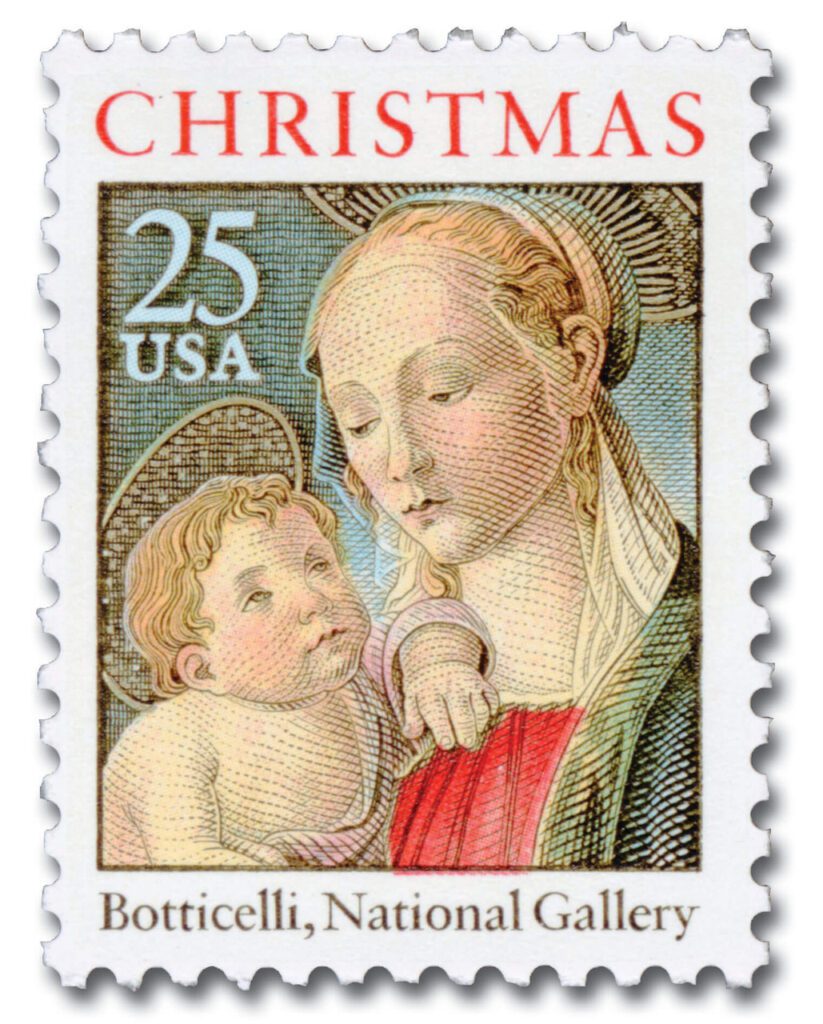
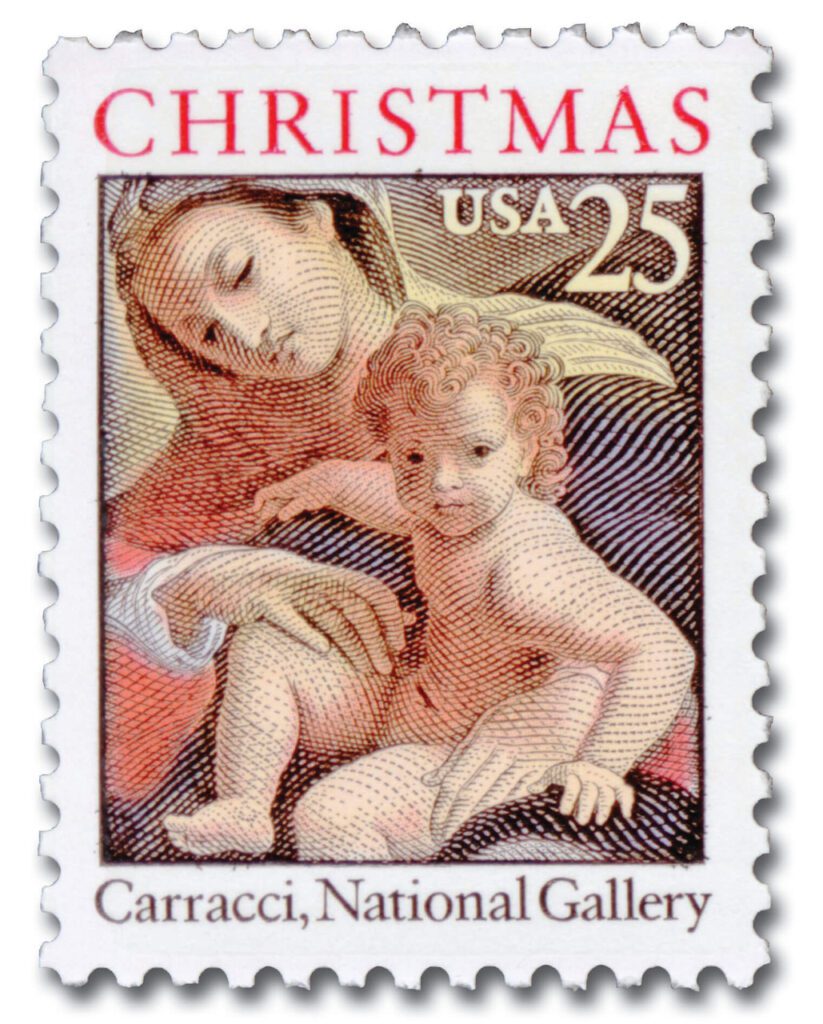

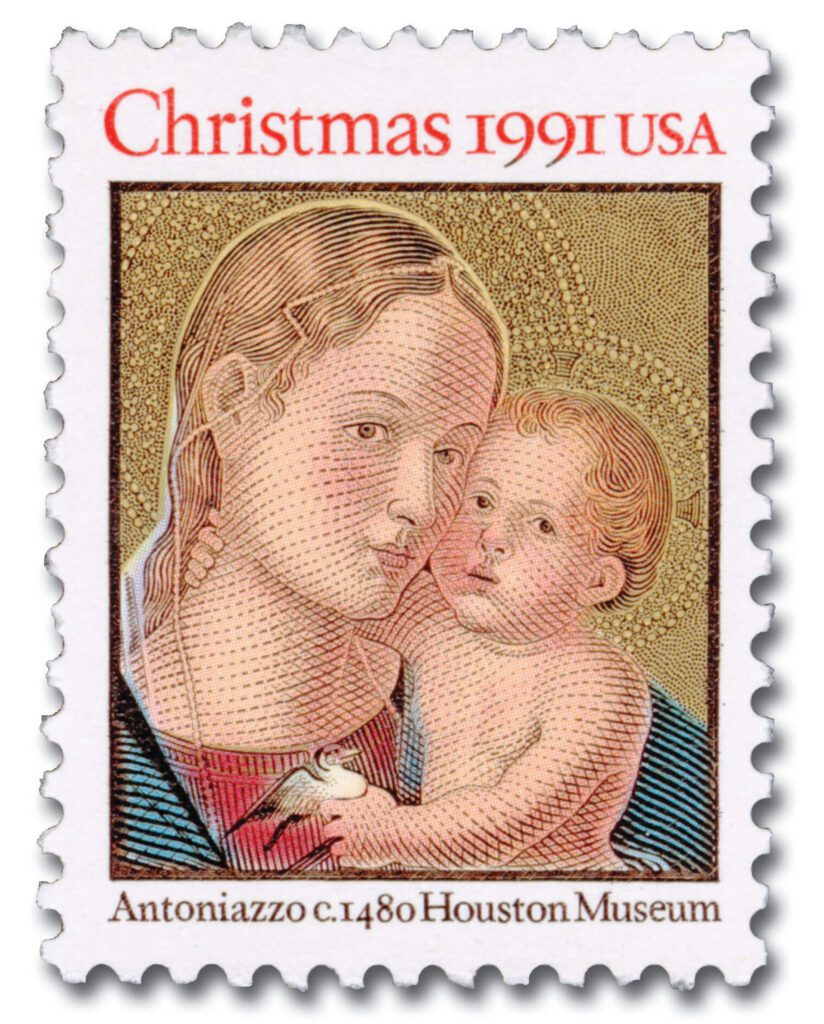
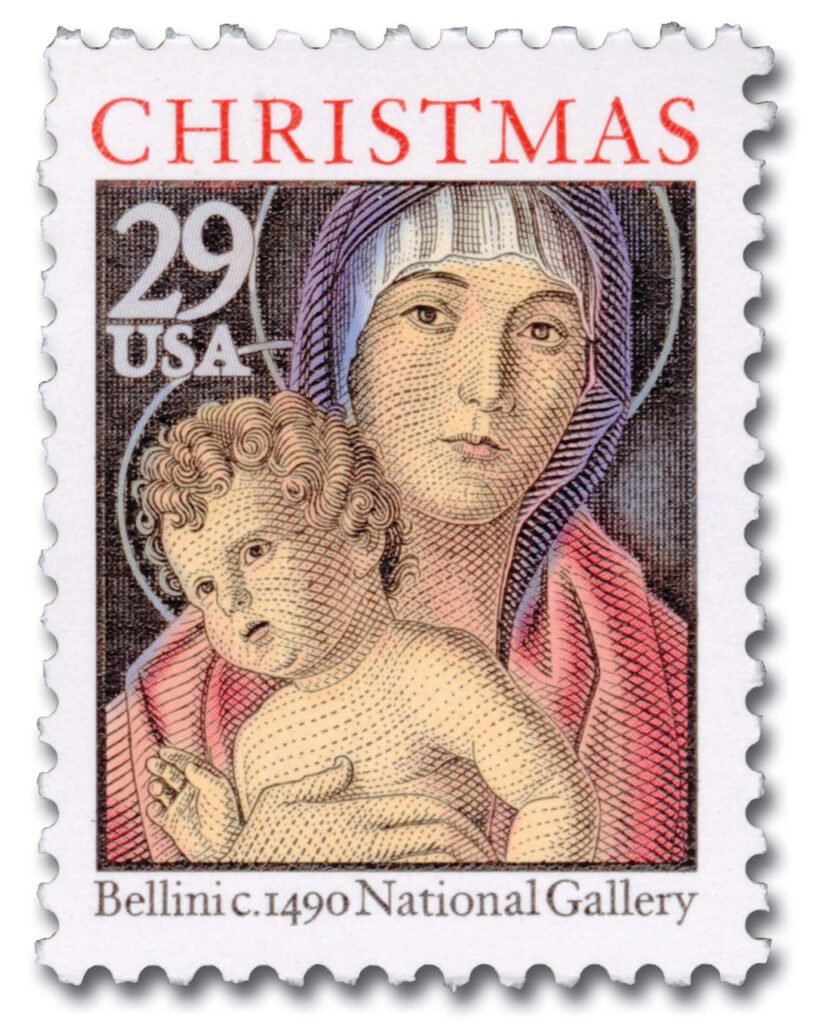
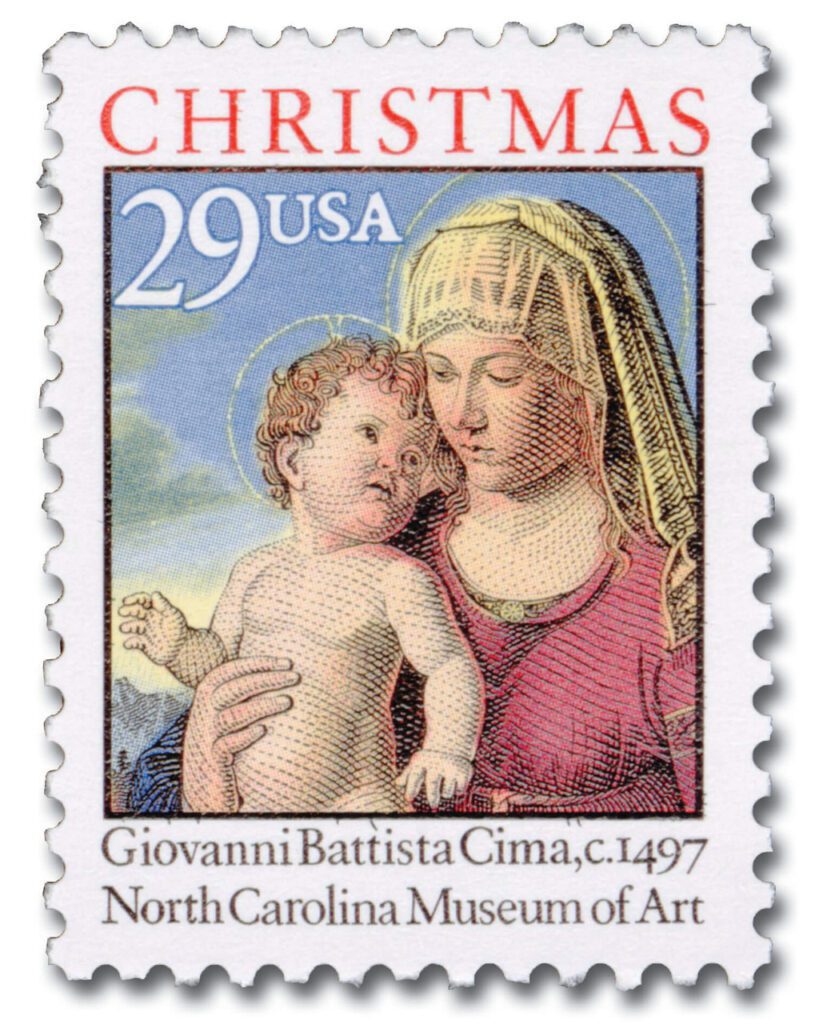
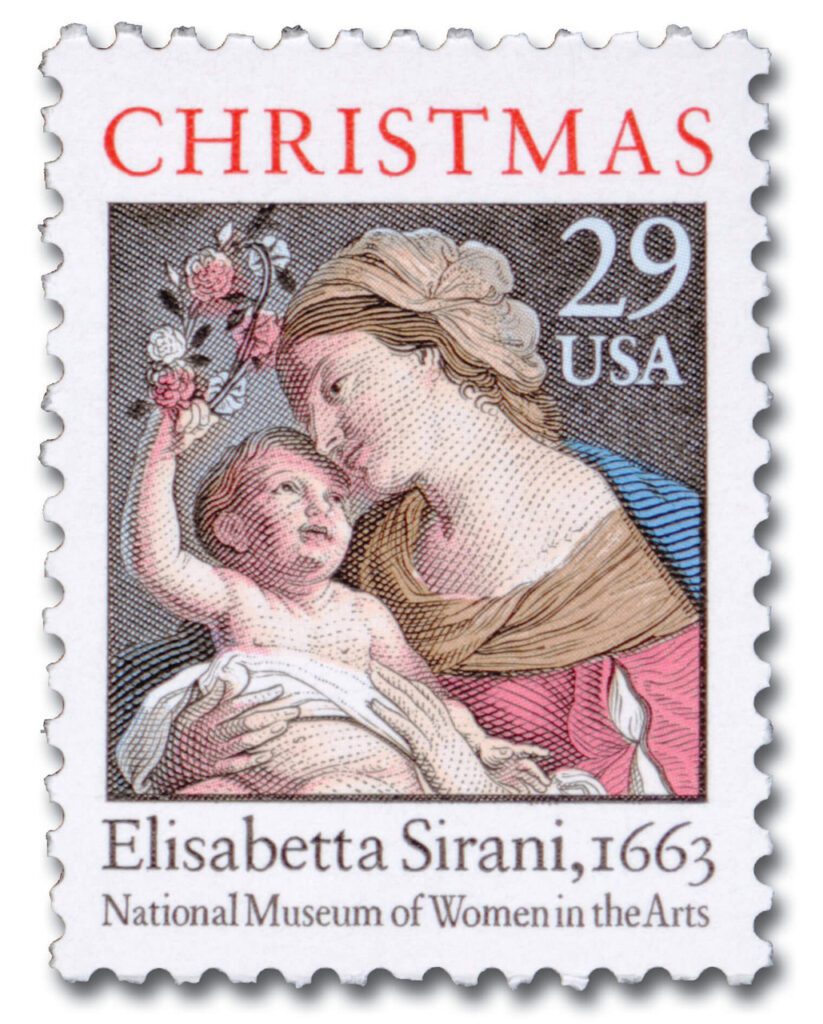
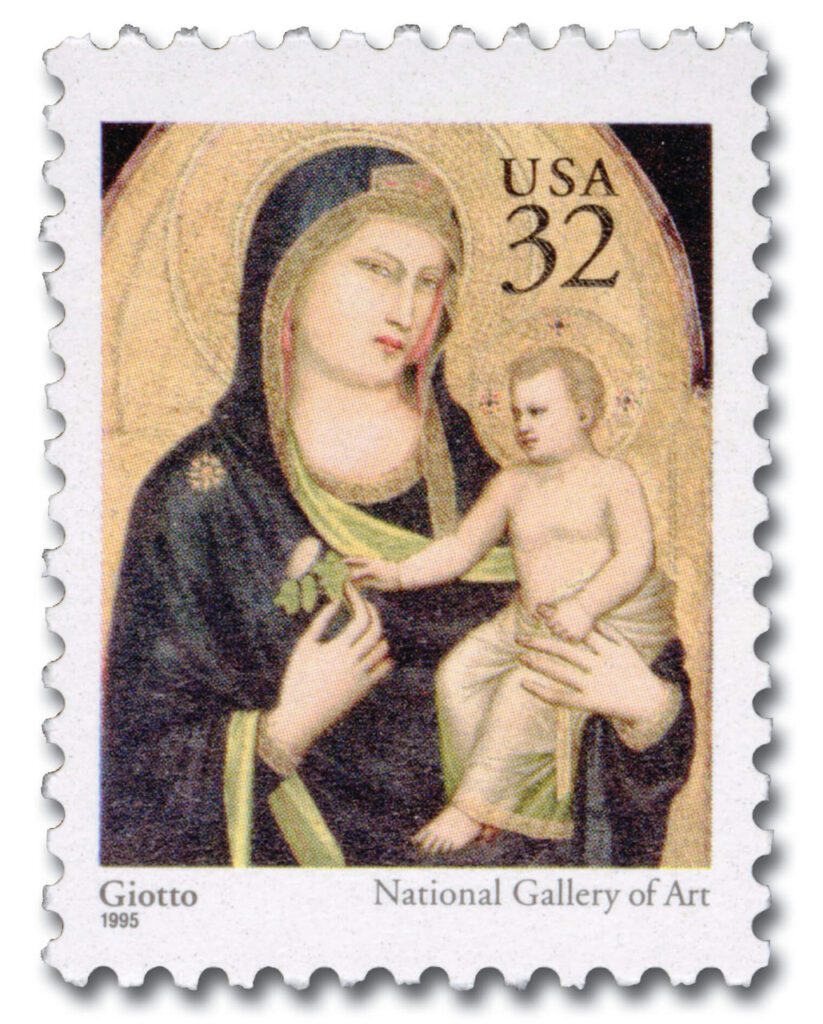
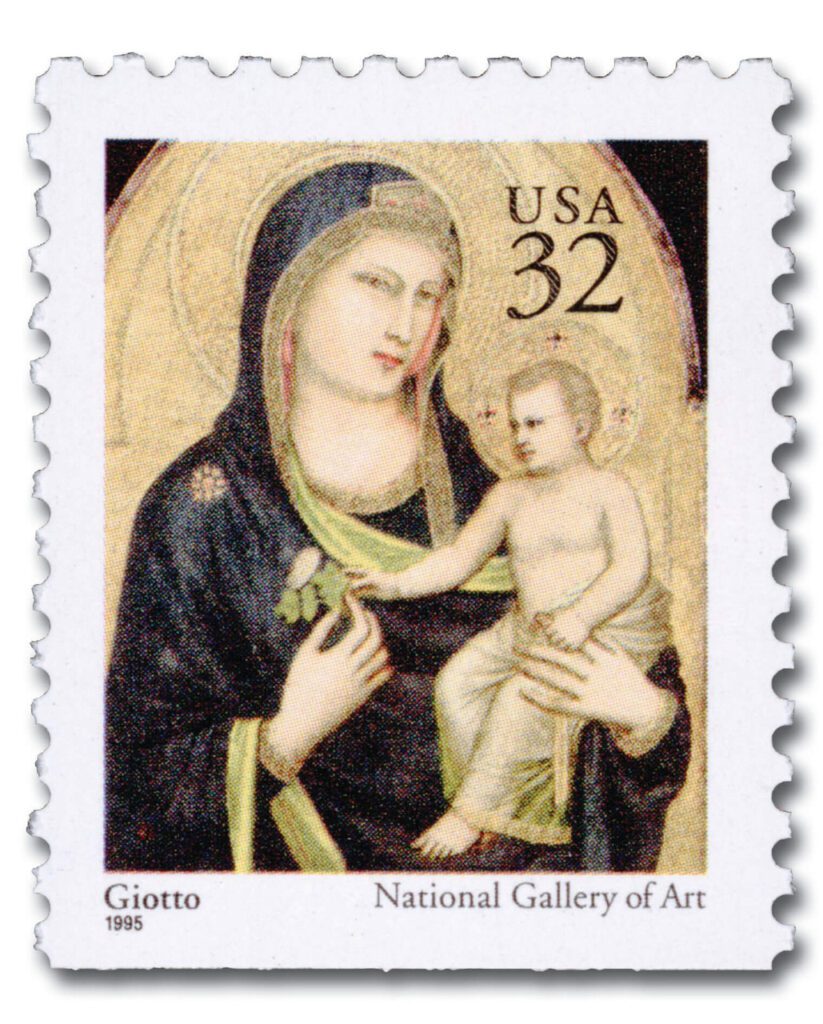
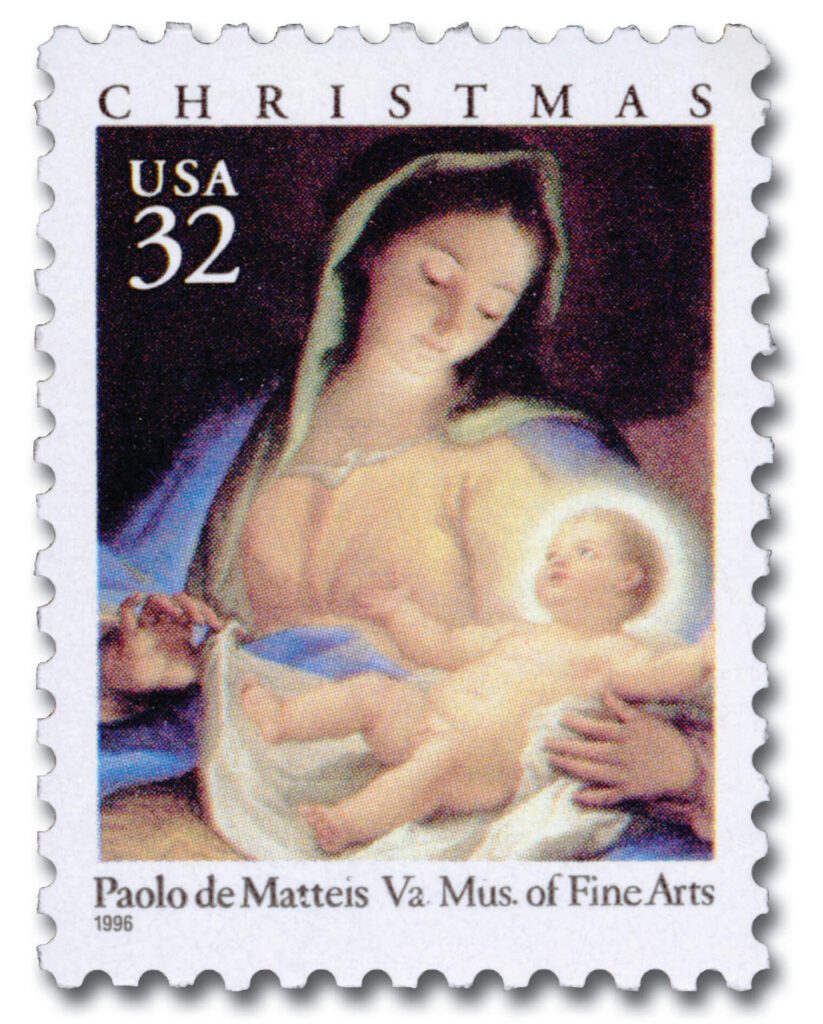
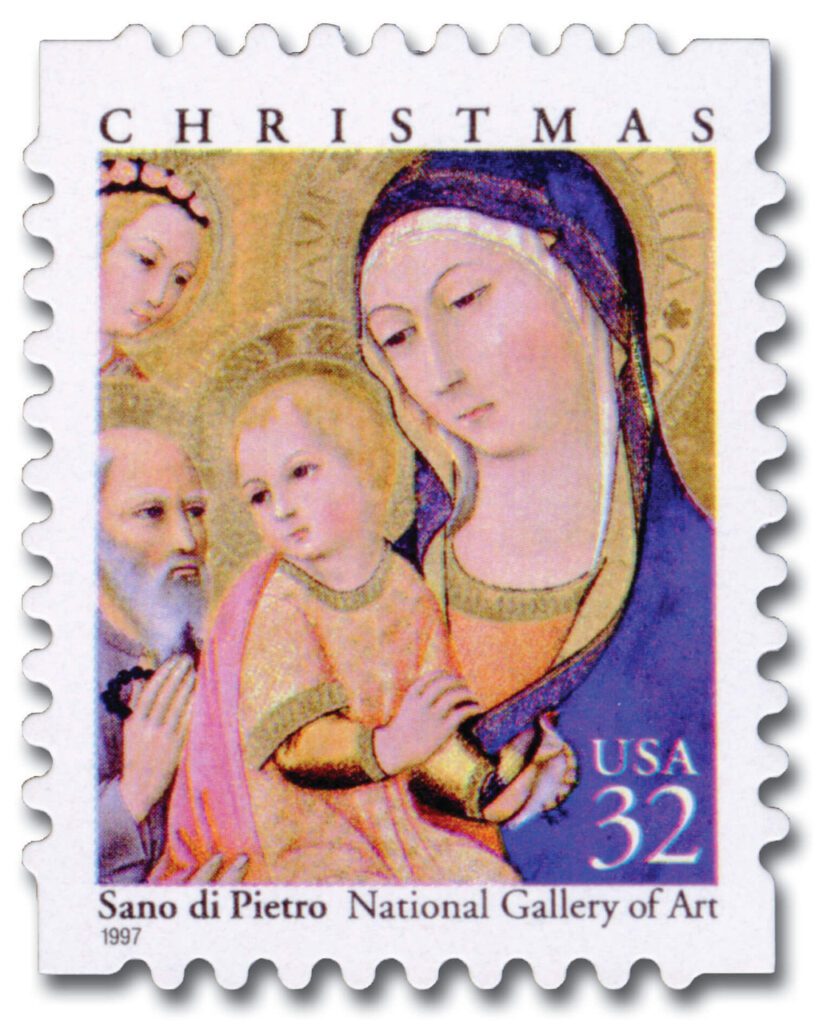
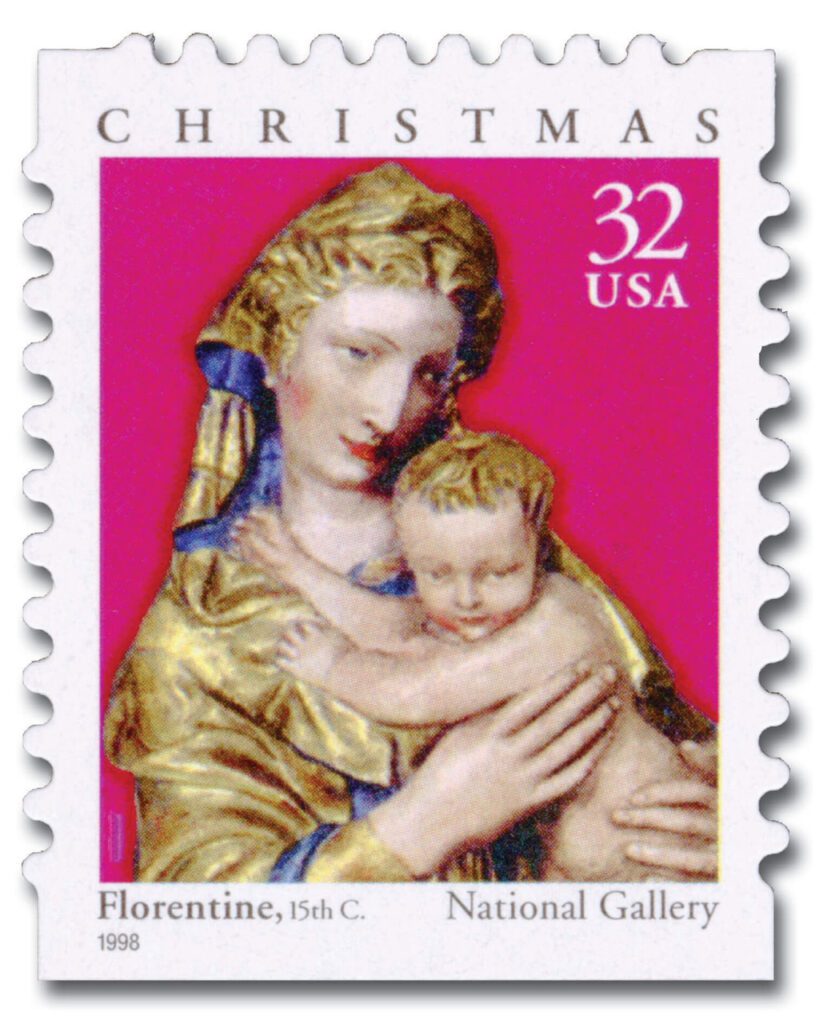
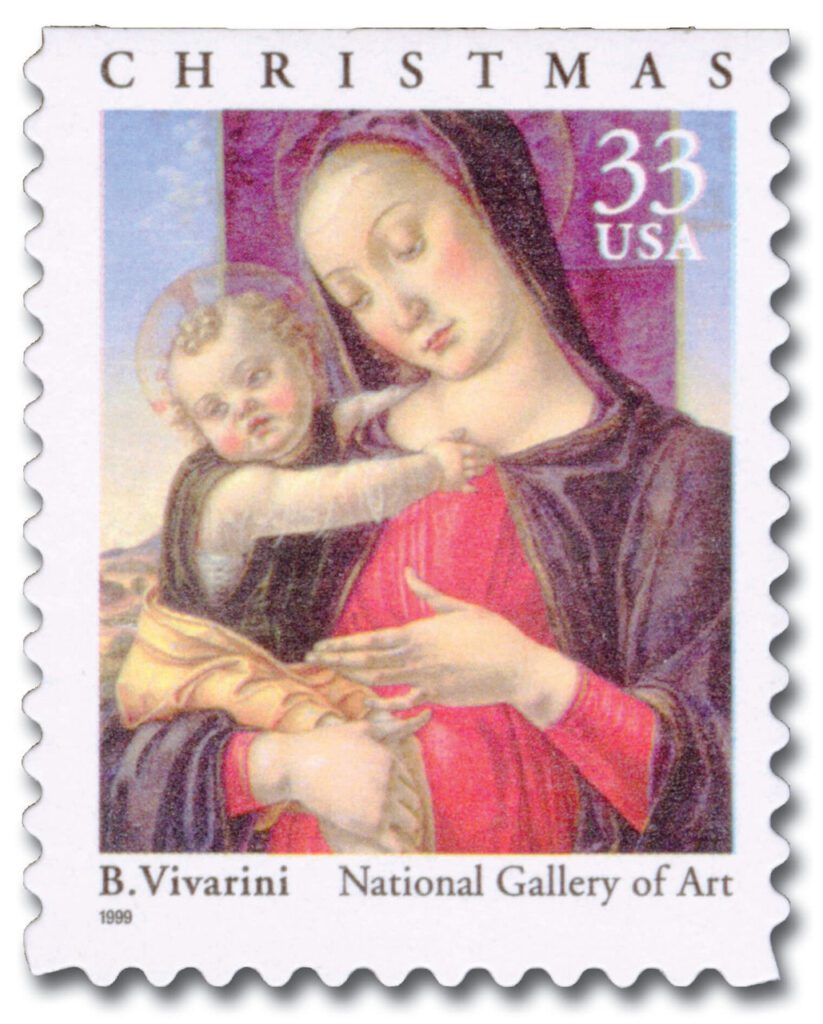


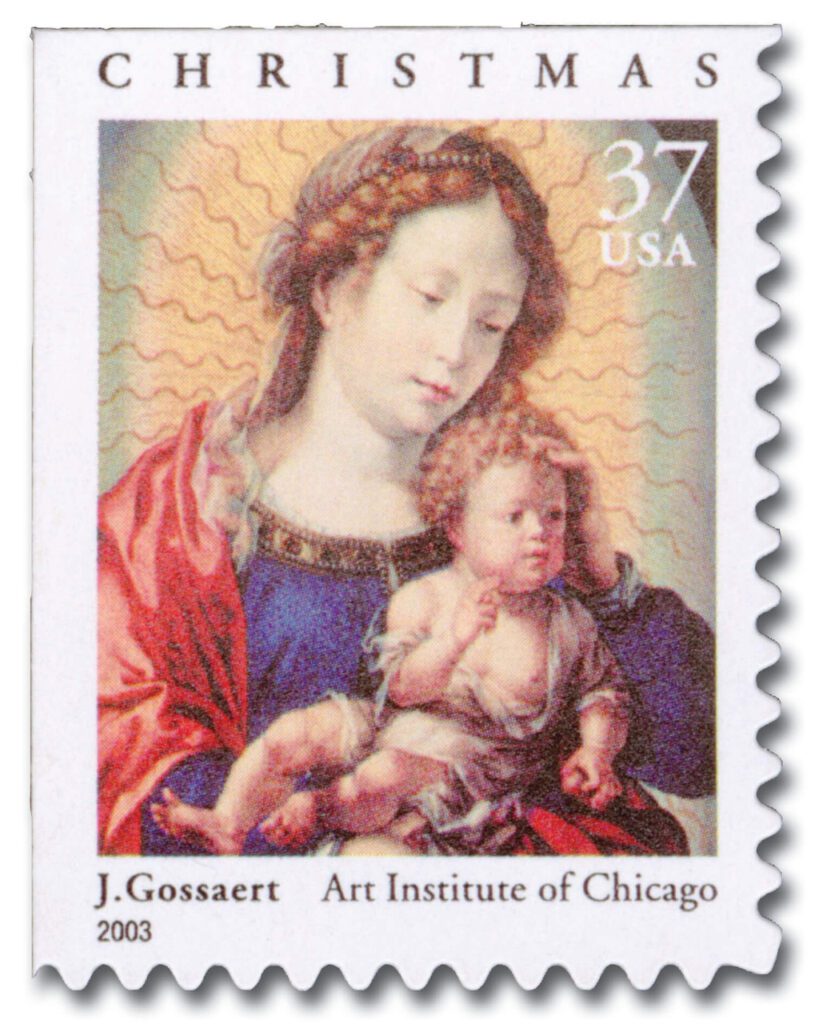
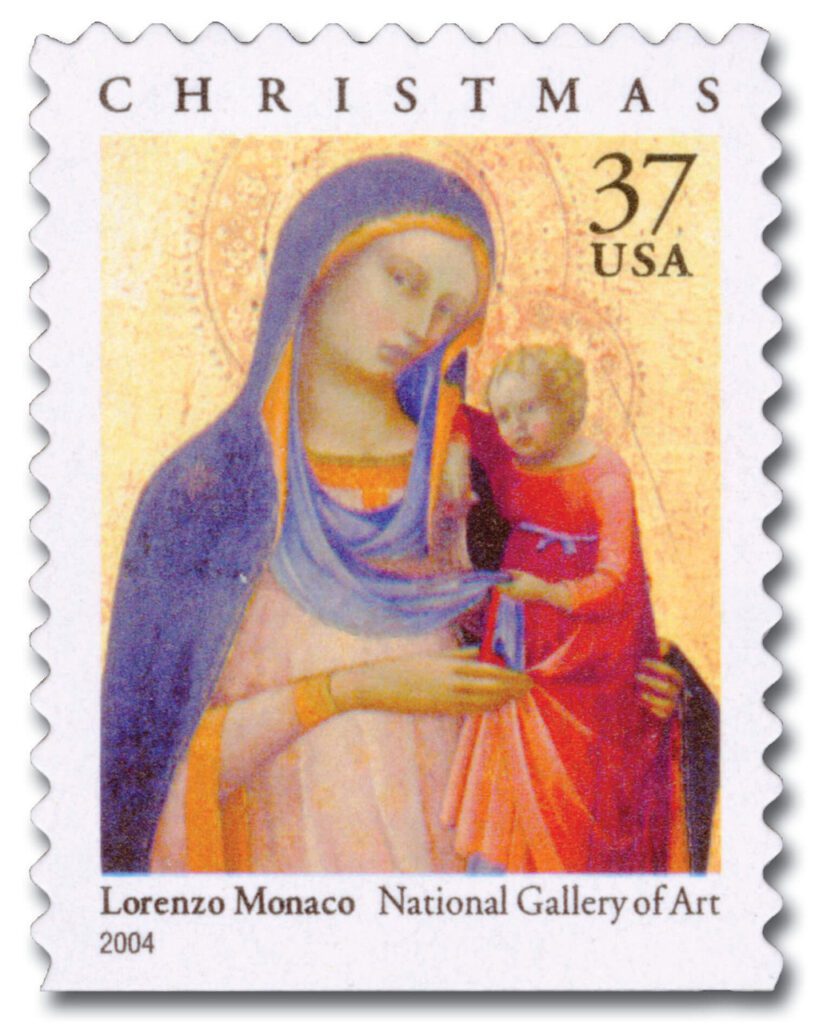
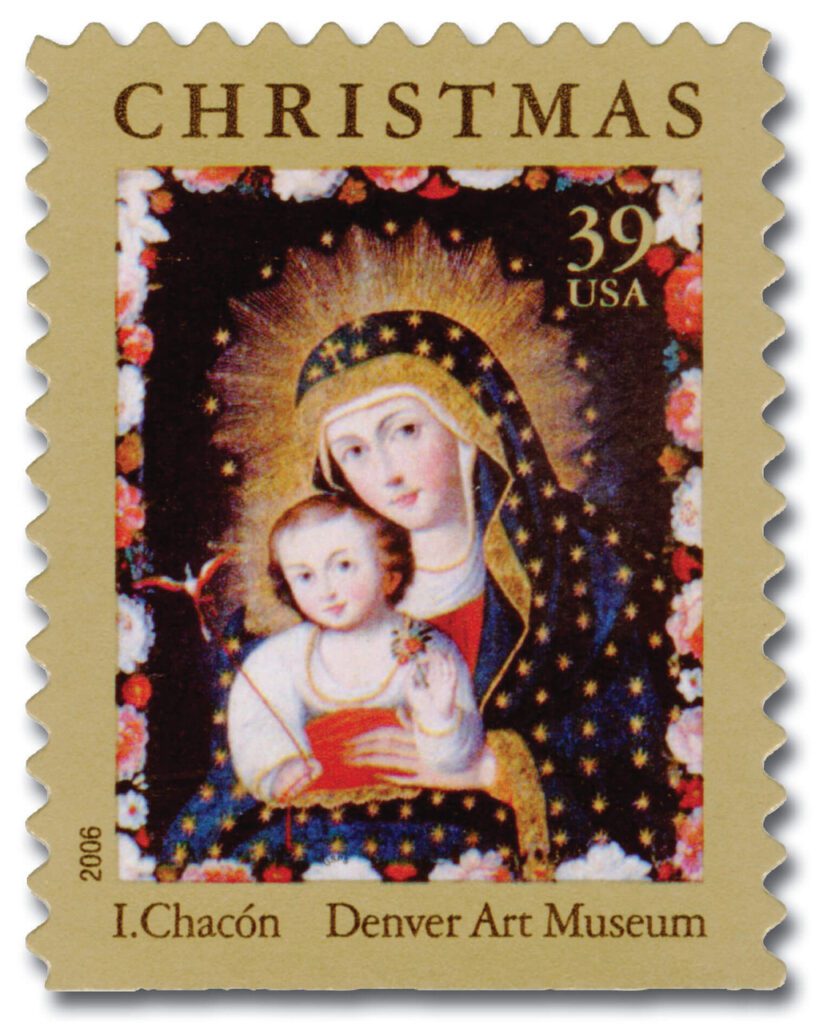
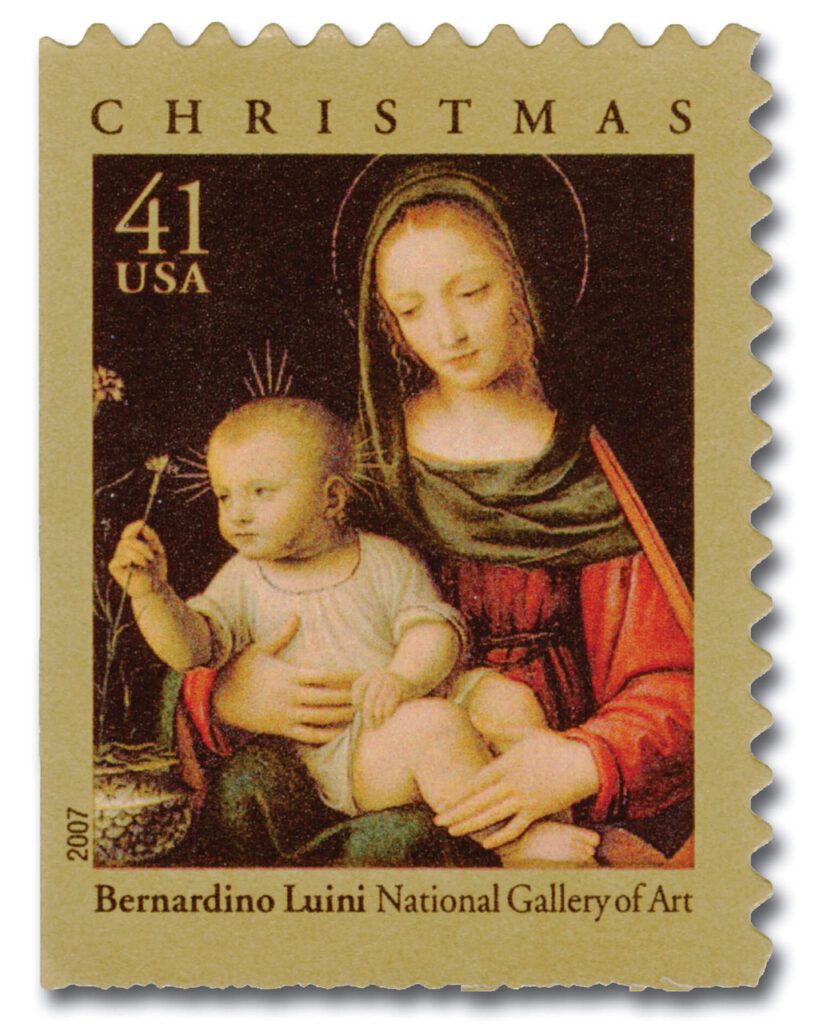
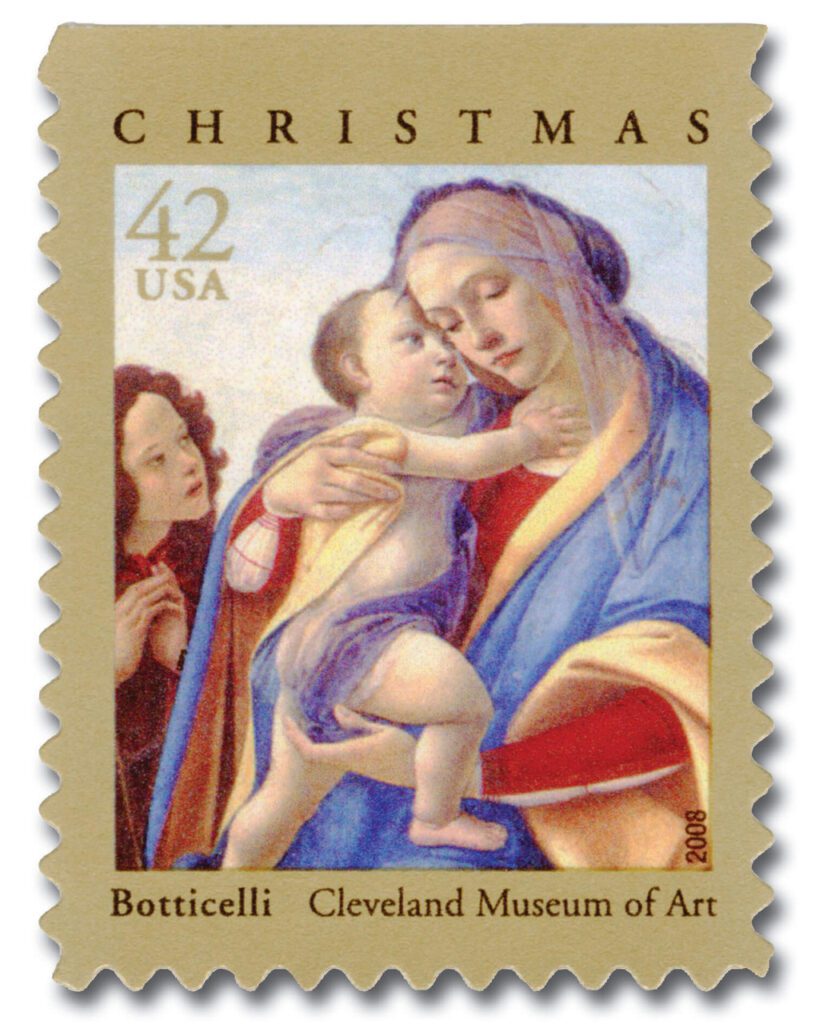
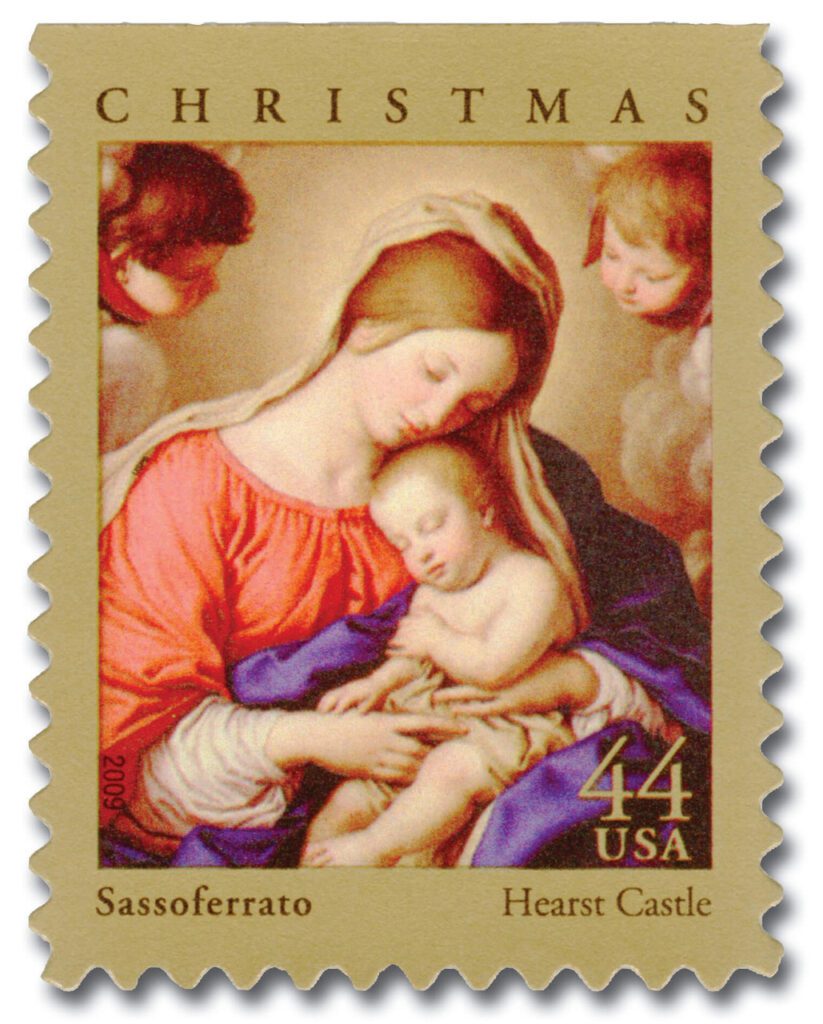
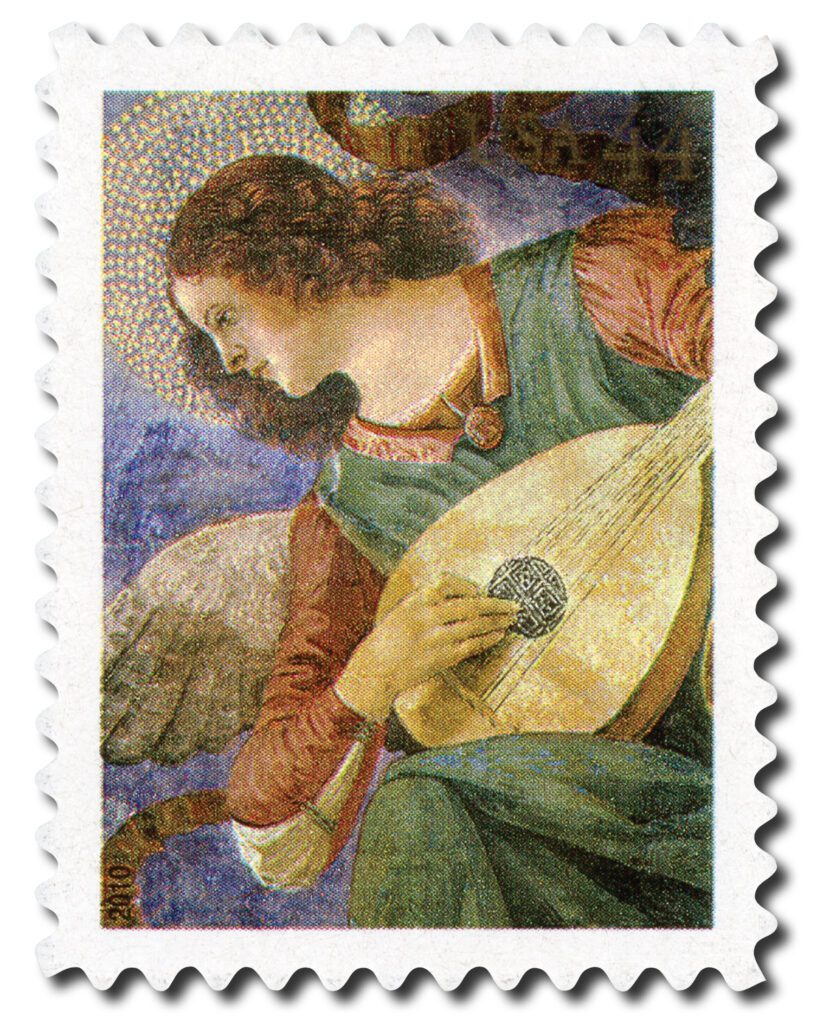
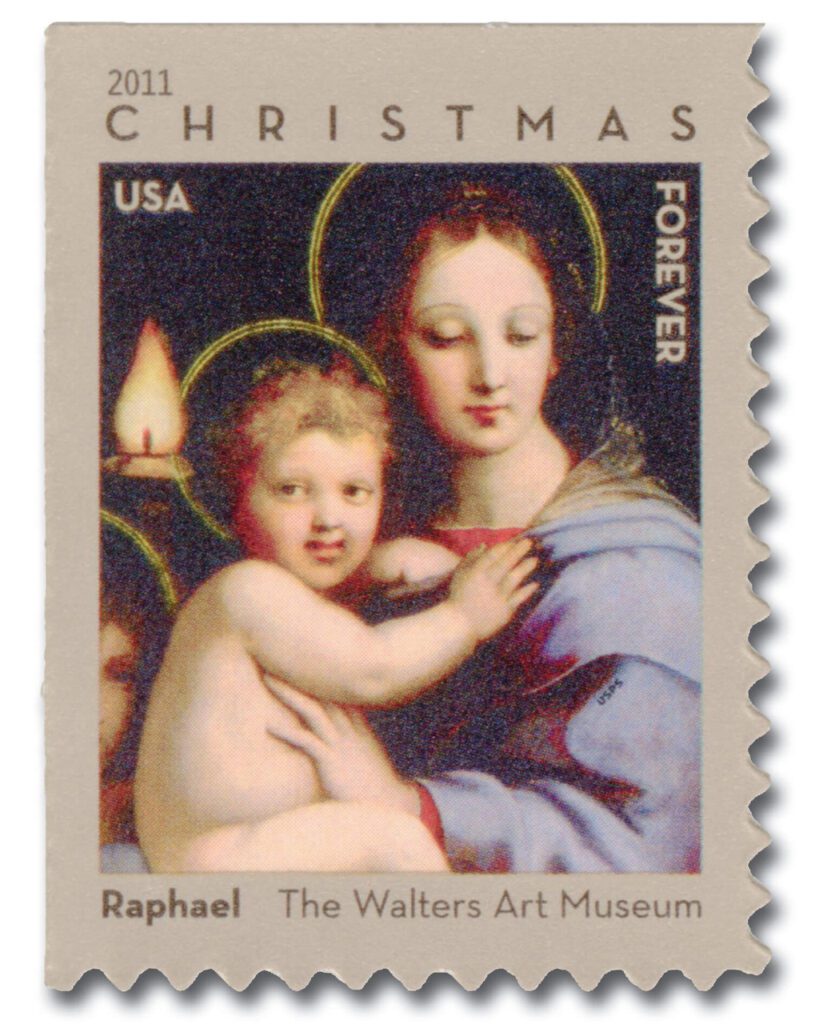
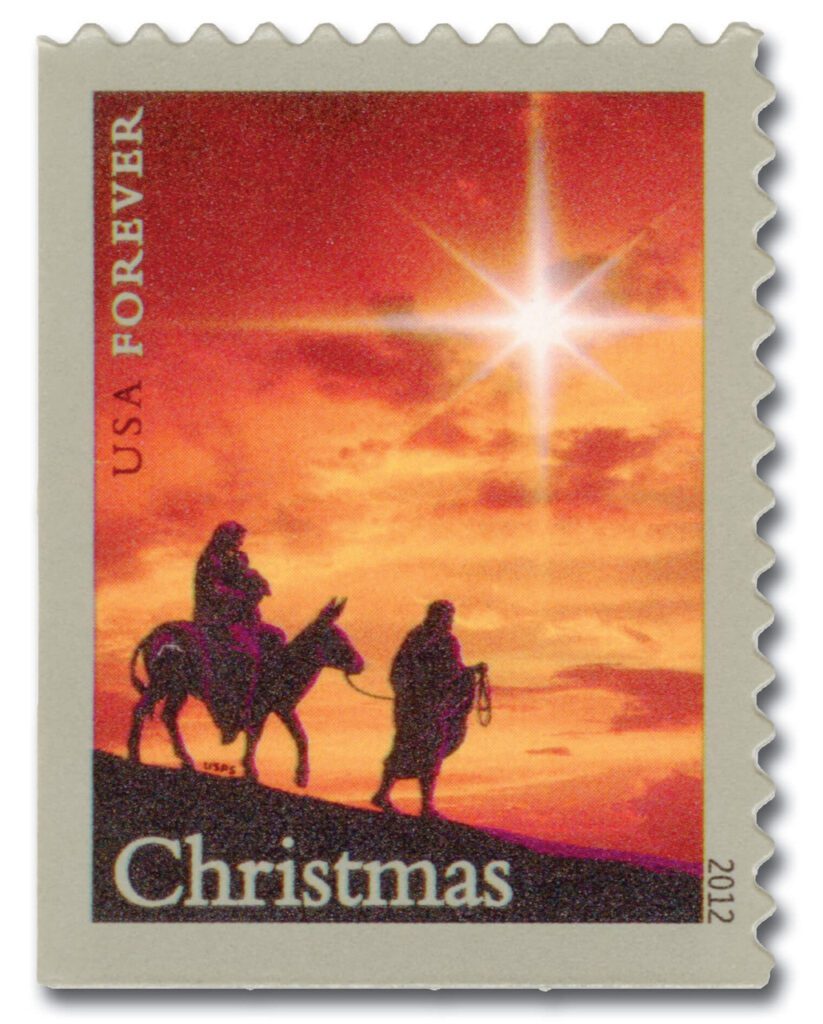
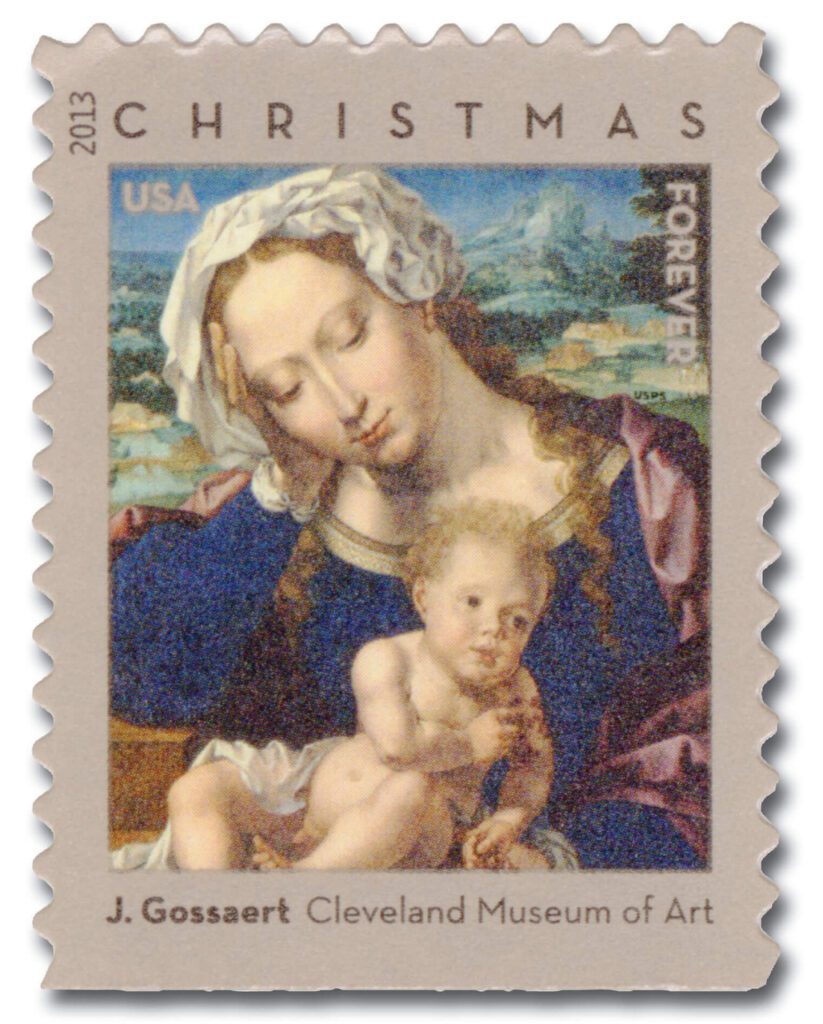
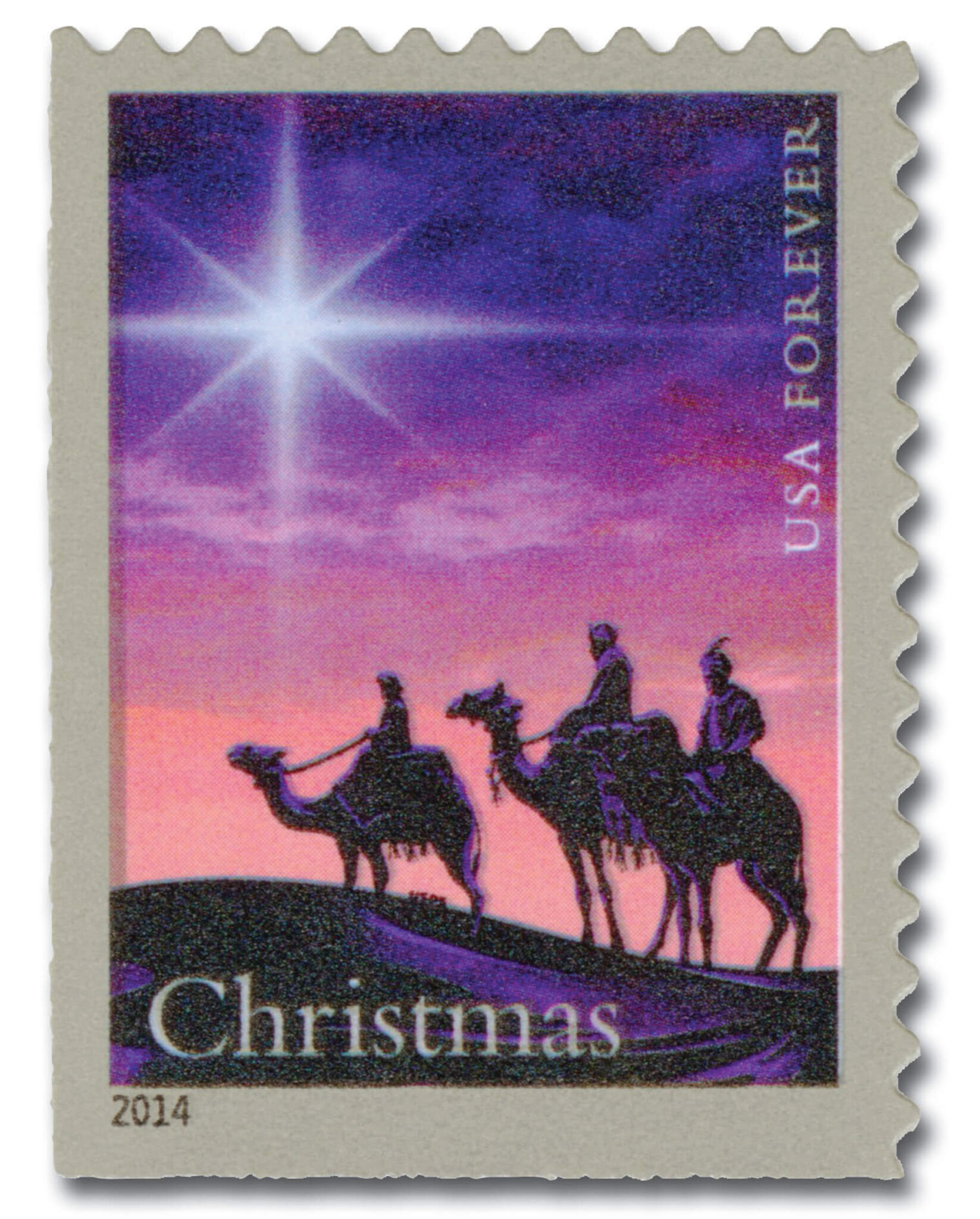
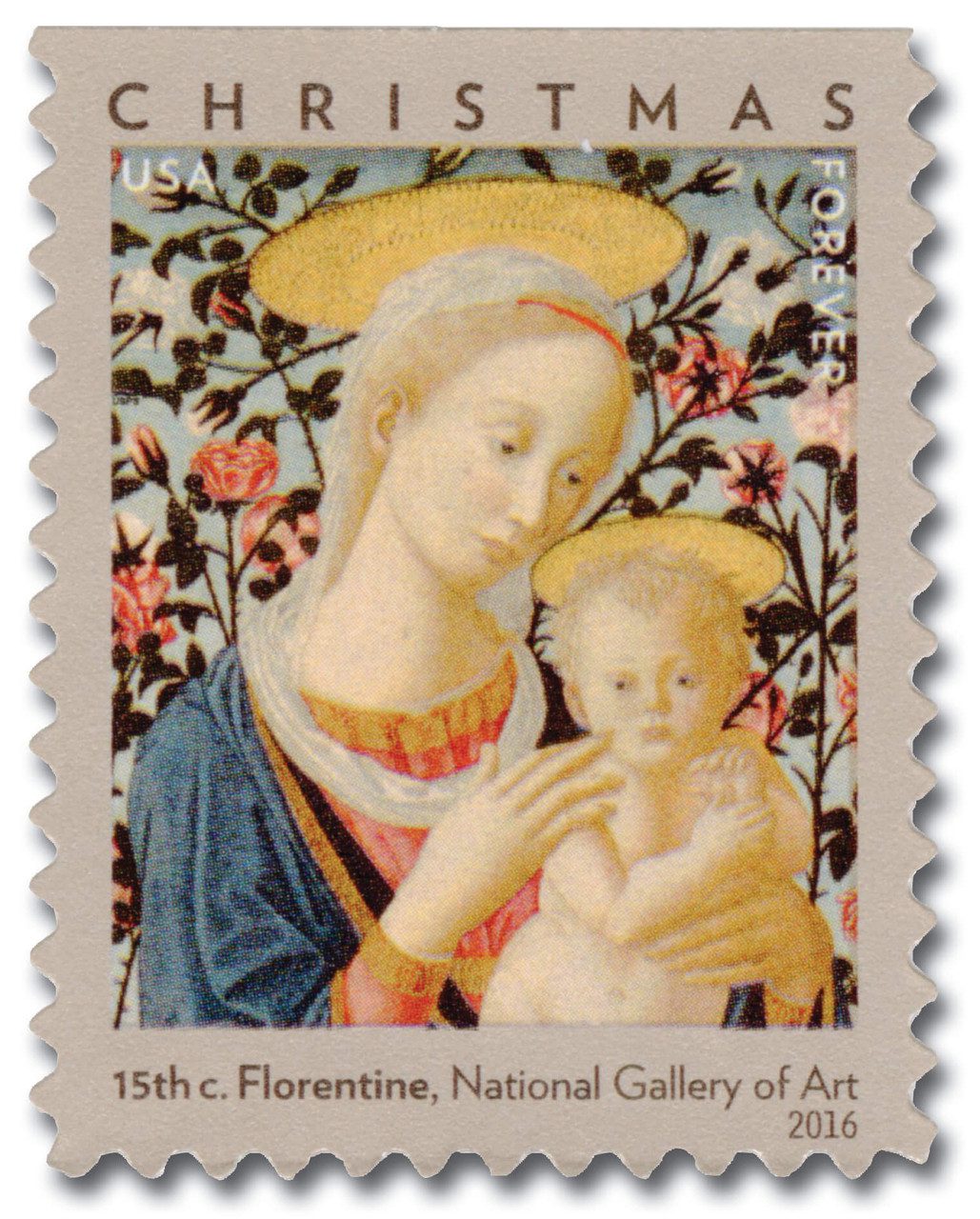
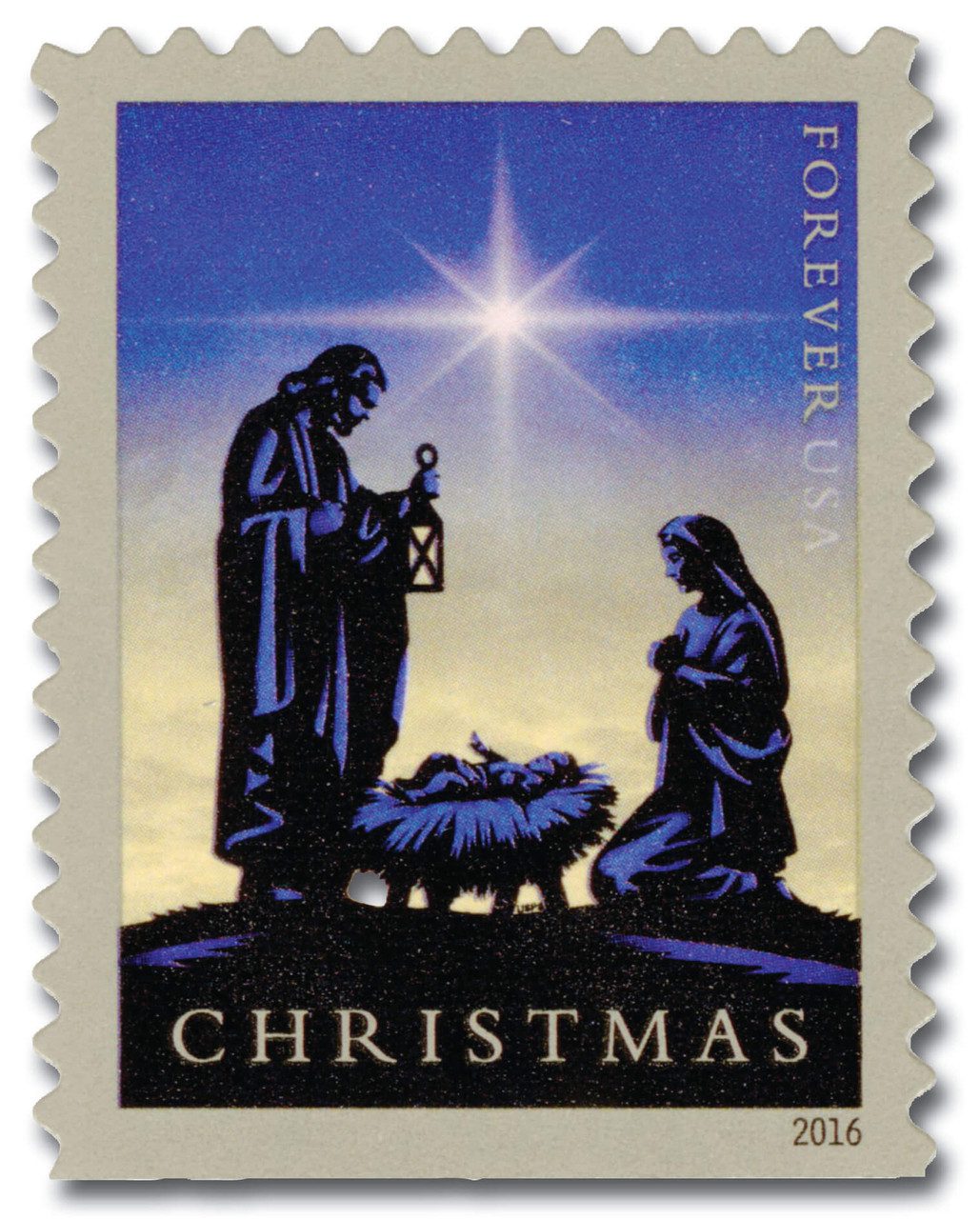
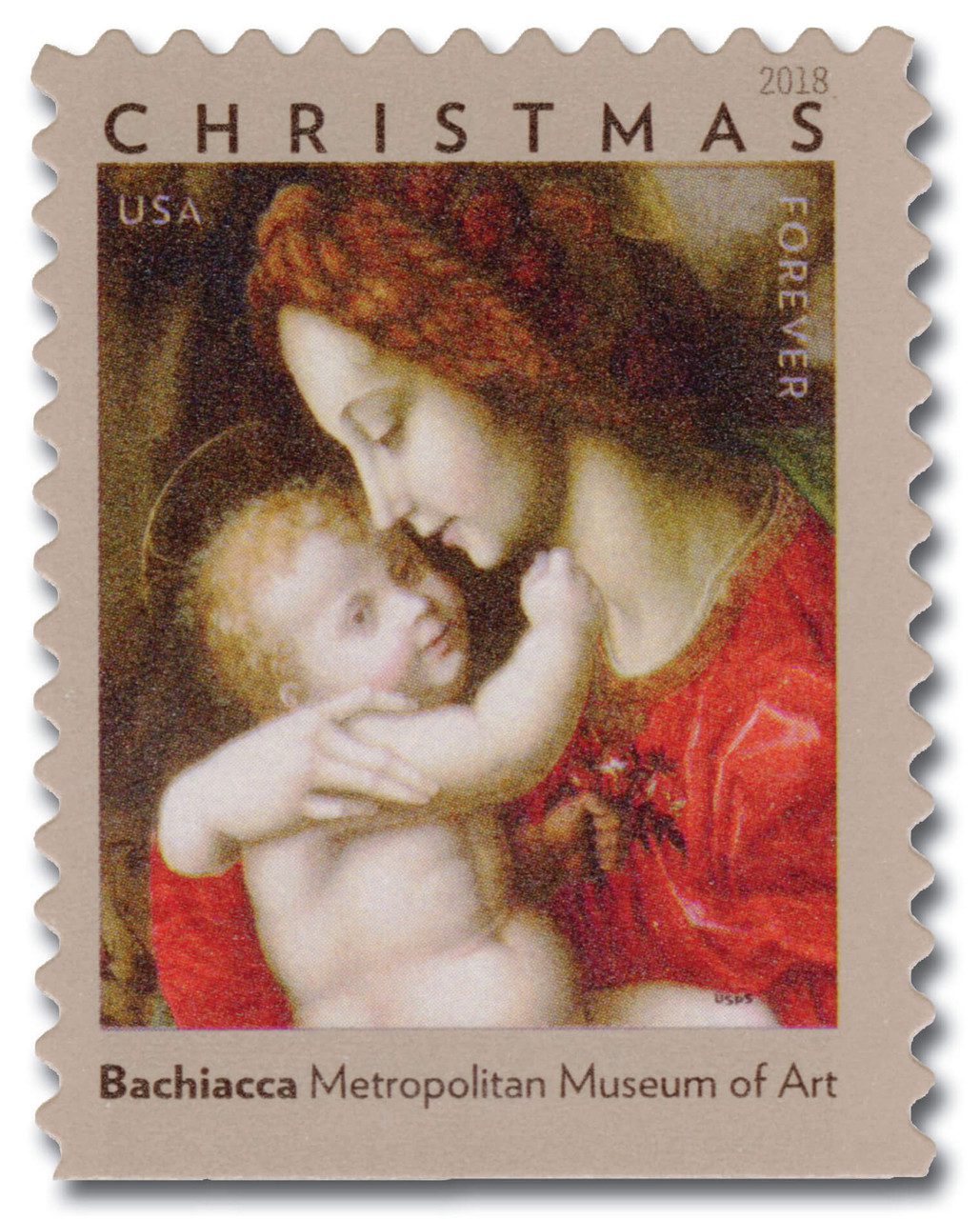
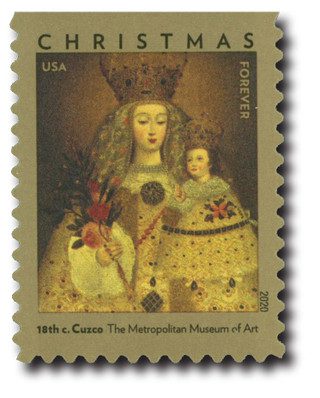
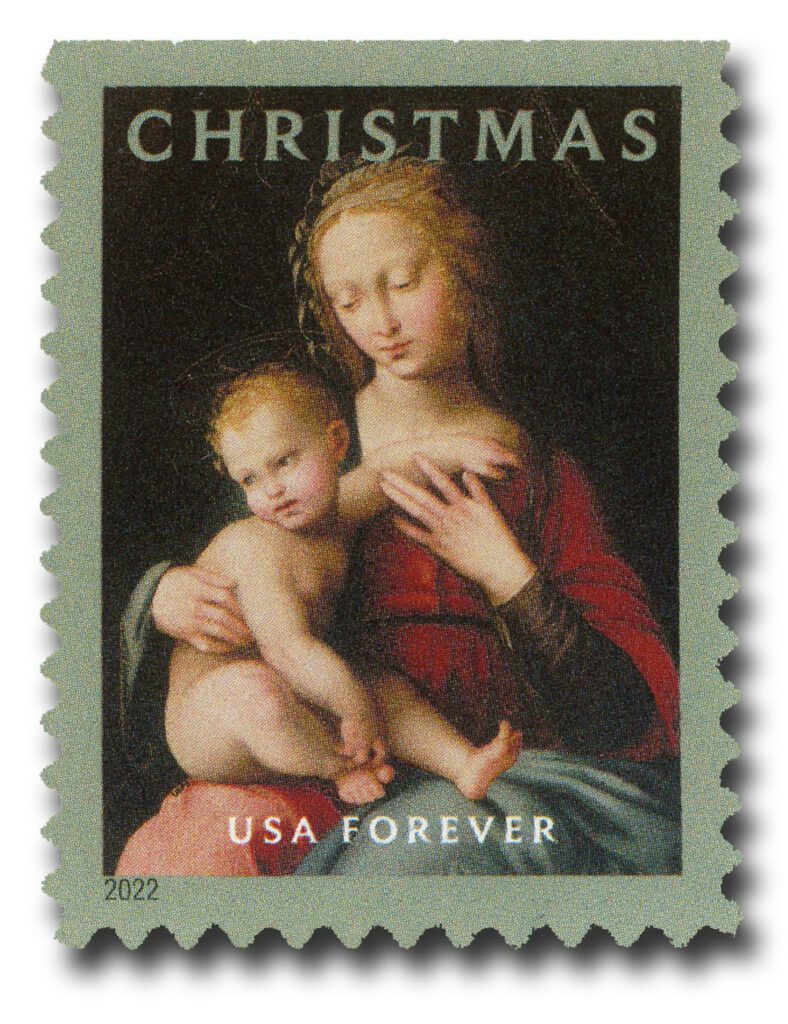
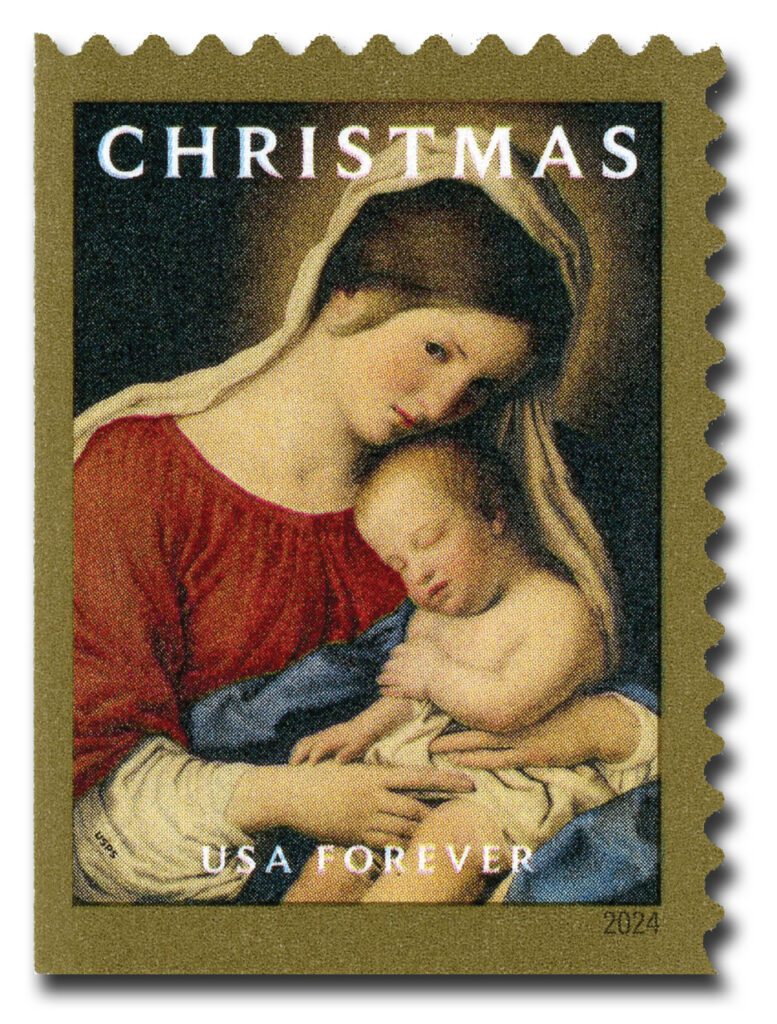
Did no realize that there were so many religious Christmas stamps issued over the years. Mystic should create a collection of such as I am sure many collectors and others would like to own,
I noticed that you do not have the Oct 27, 1997 Madonna and Child, by Sano di Pietro catalog #3176
listed here.
Also I just realized that I don’t have #3820, Oct. 23, 2003 Madonna and Child, probably because the Post Office said it was the same as 2002 (#3675) but it looks like the 2002 stamp has 2002 printed on the bottom left and the 2003 has 2003 printed, therefore they are DIFFERENT stamps correct? If so, this messes up my collection which my mom started in 1962.
Thank you,
Debi
Hi Debi,
#3675 and #3820 are different stamps. In addition to the dates, #3820 was issued in a booklet format.
https://www.mysticstamp.com/Products/United-States/3675/USA/
https://www.mysticstamp.com/Products/United-States/3820/USA/
Aren’t the many angel stamps considered Traditional ? And if not, why not ?
Wow !! Another great informing and updating Mystic stamp article. Thanks for another winner, Mystic !
I loved this article on the Christmas stamps! Thank you, Mystic.